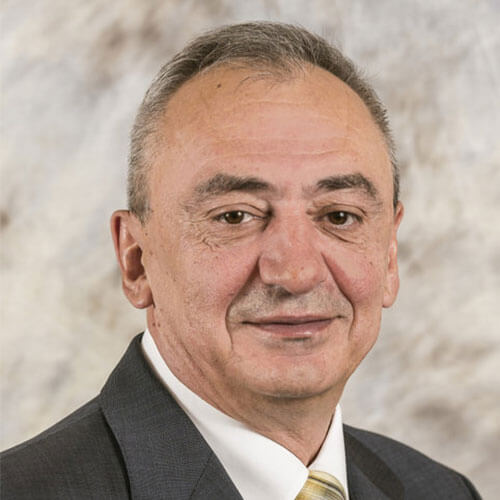
Aleksa Marković
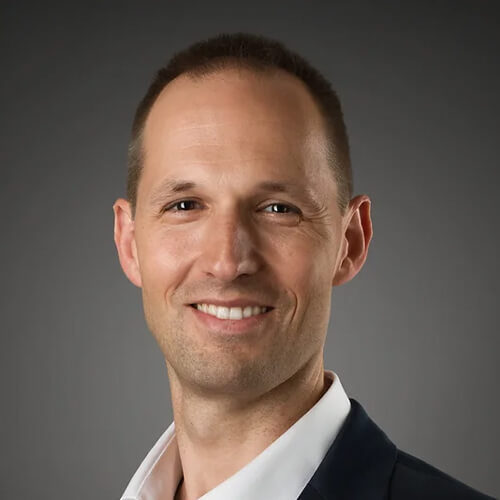
Ali Çekici
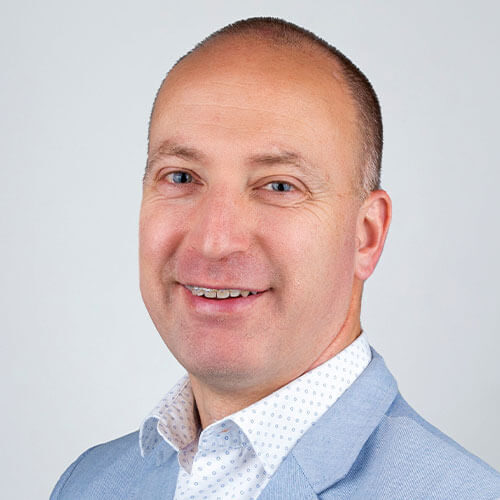
Andrija Petar Bošnjak

Angie Segatto
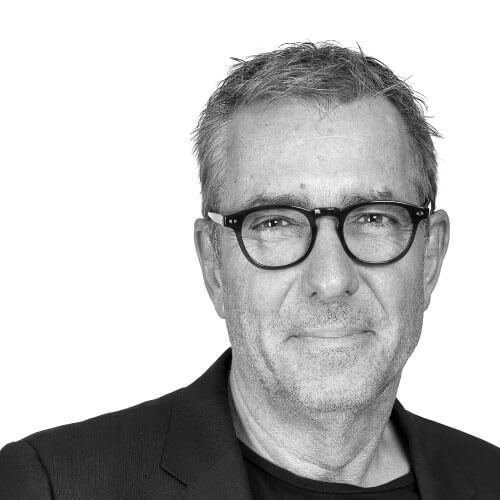
August Bruguera
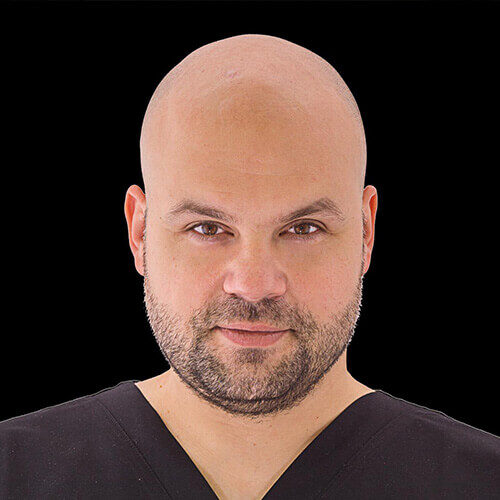
Boris Filipović

Daniele Rondoni
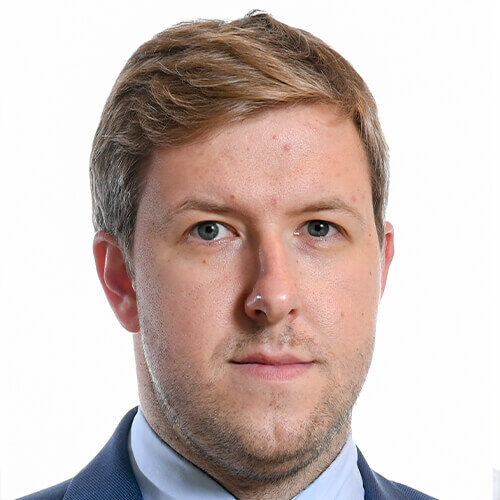
Danko Relić
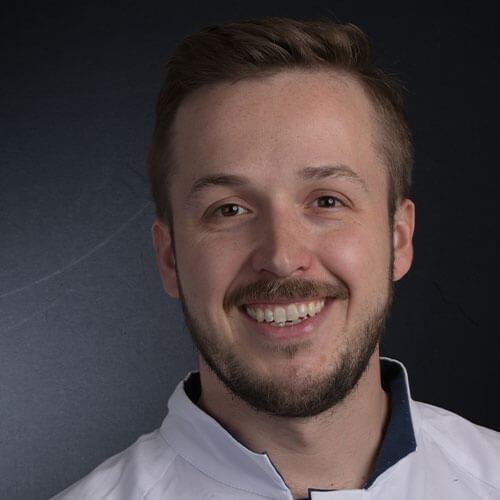
Dario Novak

David Geštakovski
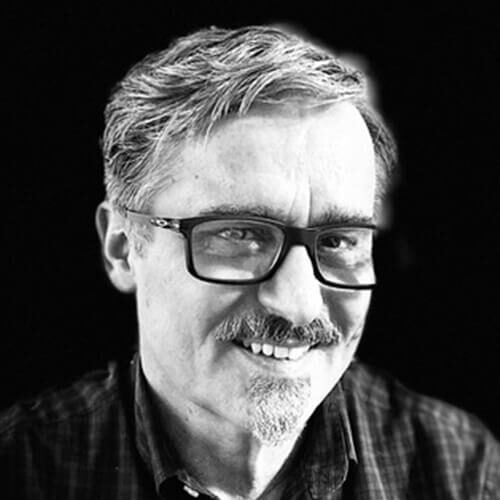
Davor Seifert

Dejan Lisjak

Dimitar Filtchev
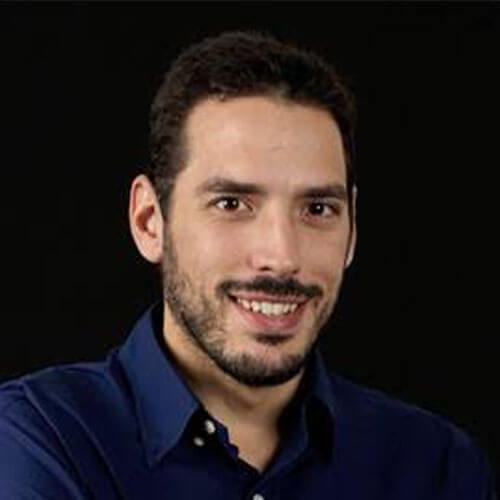
Dimitrios Spagopoulos
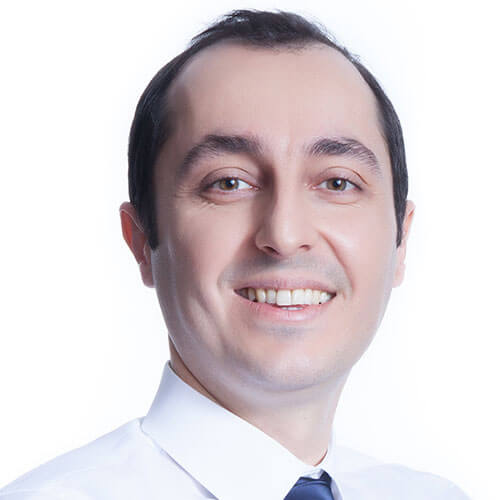
Erhan Çömlekoğlu
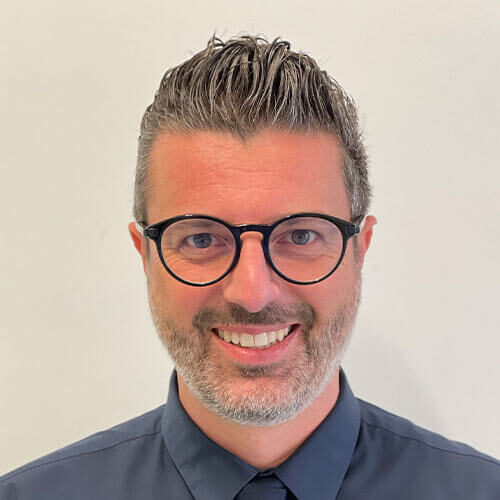
Francesco Ditommaso
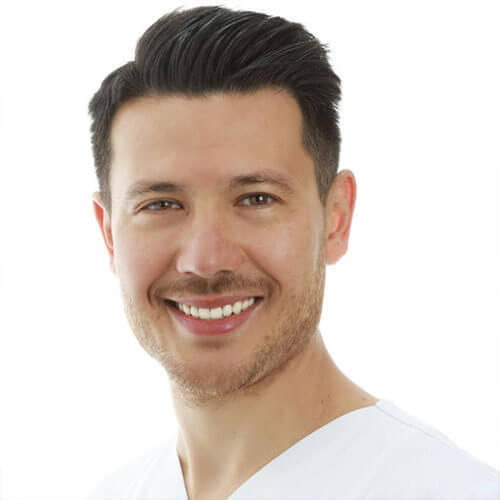
Frank Spitznagel
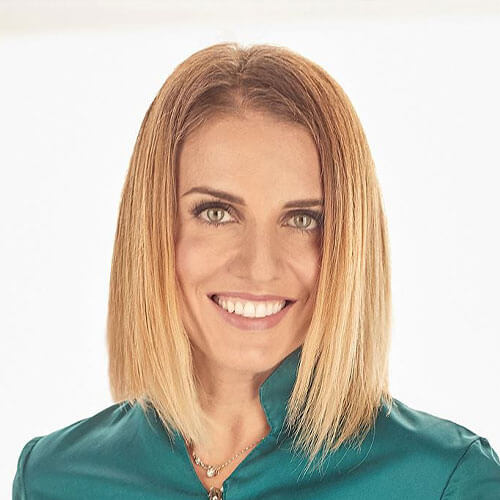
Gabriella Romano

Hans-Jürgen Joit
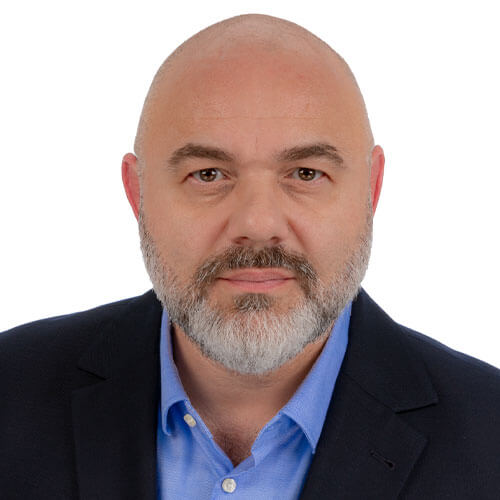
Igor Galić
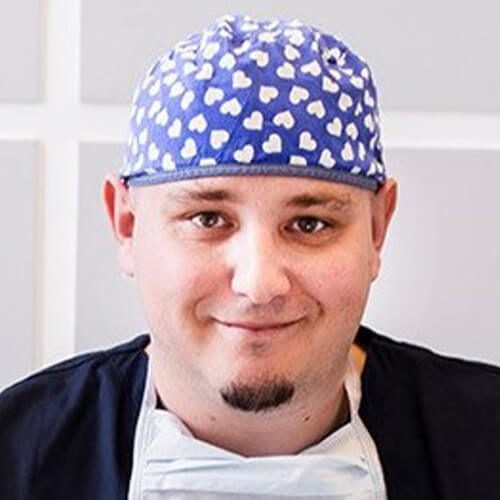
Igor Smojver

Ivica Anić

Jan Schünemann
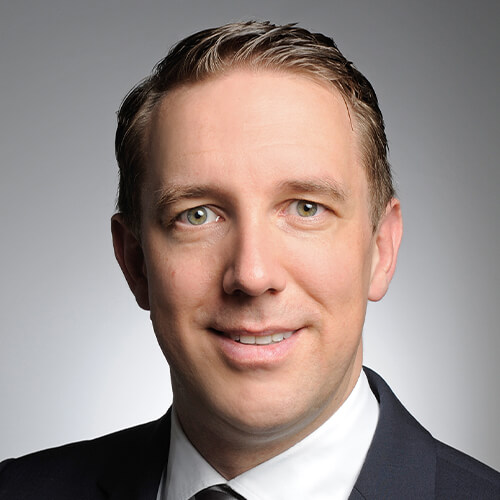
Jan-Frederik Güth
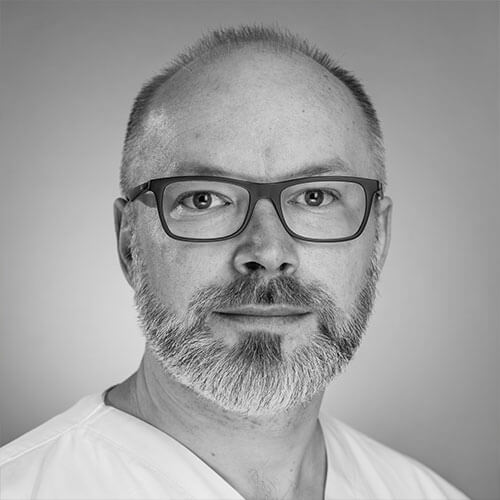
Josip Brusić
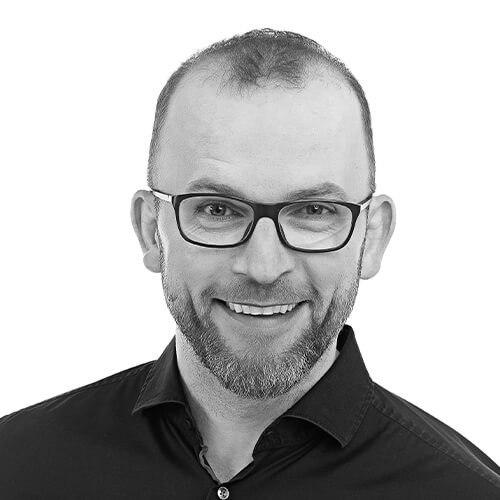
Krzysztof “Kris” Chmielewski

Leon Lazić

Luka Stojić

Mario Bosnar
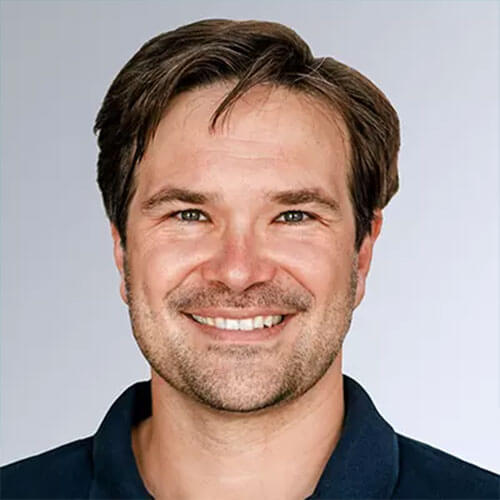
Markus Tröltzsch
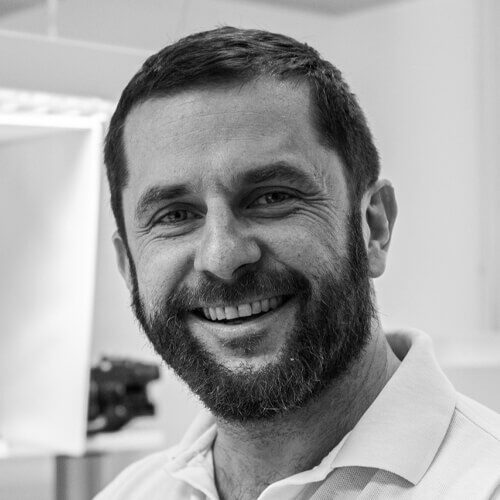
Matej Luk

Matej Vidić
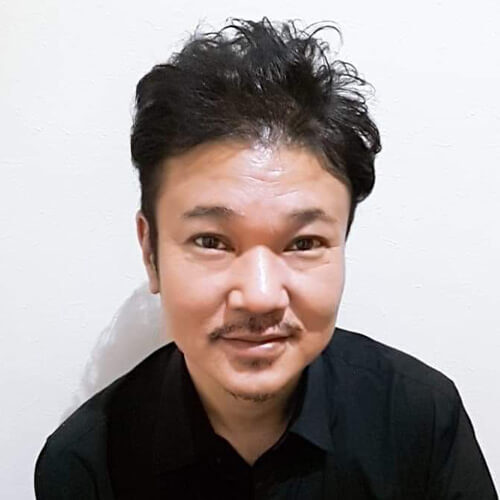
Mitsutaka Fukushima
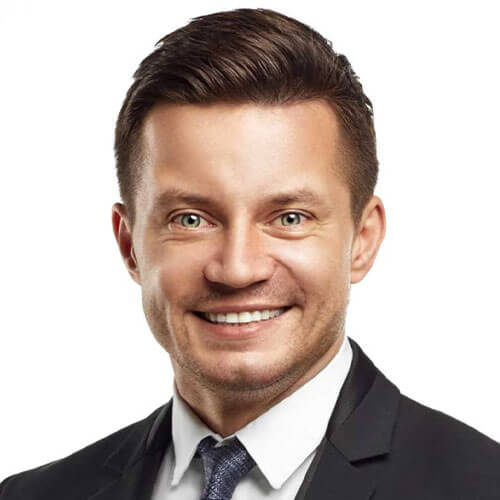
Nazariy Mykhaylyuk
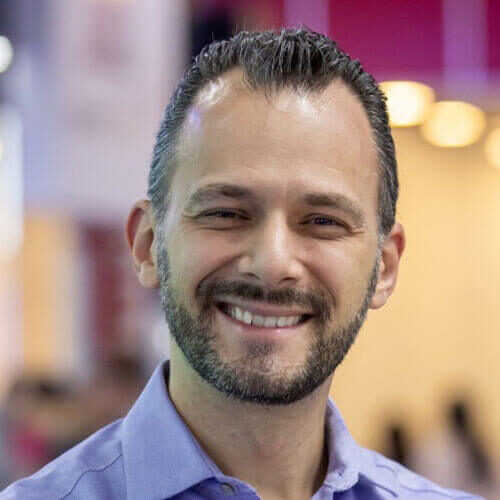
Rafael Beolchi
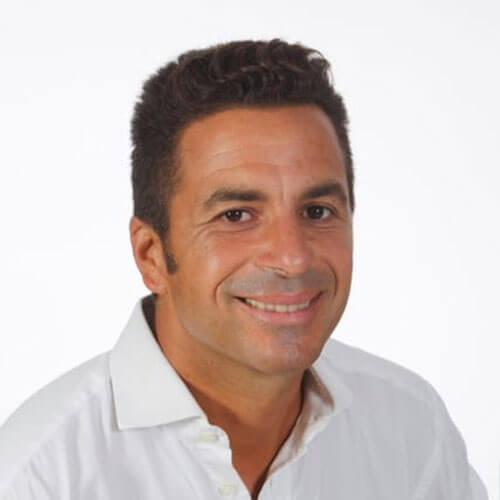
Riccardo Ammannato

Ryo Miwa
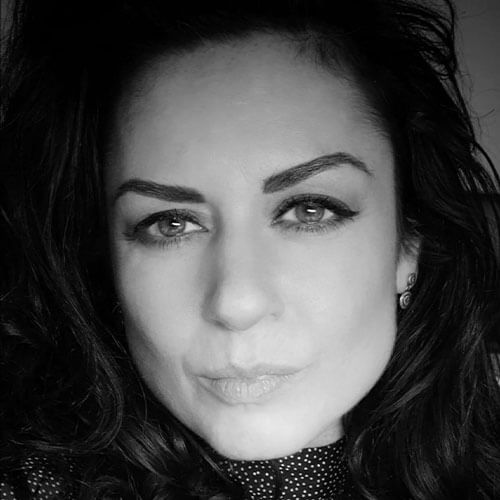
Sabine Mayer
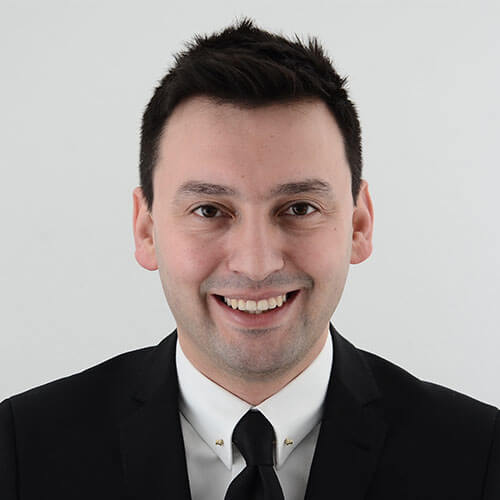
Serhat Aslan

Siniša Drobnjak

Tomaž Ivanušič

Verena Nižić

Vladimir B. Stojiljković
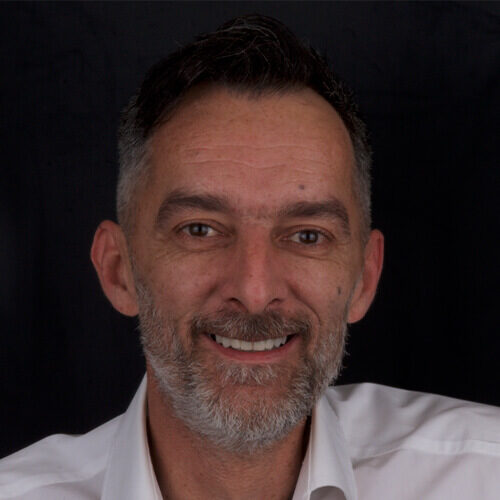
Zoran Kovač

Aleksa Marković
Profesor oralne kirurgije, implantologije i stomatološke anesteziologije, Stomatološkog fakulteta, Univerziteta u Beogradu. Direktor ITI Centra Beograd i ITI Study Club Beograd. Gostujući profesor na Univerzitetu Mursija (Španija) i Sarajevu (BiH) Član je sekcije za oralnu kirurgiju i sekcije za oralnu implantologiju Srpskog liječničkog društva. Predsjednik je Sekcije za oralnu implantologiju Srpskog liječničkog društva. ITI Fellow. Autor je i koautor 50 originalnih istraživačkih radova objavljenih u domaćim i međunarodnim časopisima (29 radova objavljenih u CC časopisima) te 145 istraživačkih radova predstavljenih na domaćim i međunarodnim kongresima. Autor je i koautor 3 knjige za osnovne studije i 3 monografije.
Implant placement and loading in the esthetic zone – Surgical considerations
Implant placement in the esthetic zone is a complex procedure and requires a prosthetically-guided approach. The importance of prosthetic planning in the esthetic zone and communication between oral surgeons, prosthodontist and dental technicians are extremely important. Esthetic region is a zone in which there is often a conflict between patient expectations and objective opportunities. For this reason, the clinician must make important decisions about correct 3D implant positioning, the appropriate type of implant placement time, as well as the loading protocol. Immediate loading is certainly a special challenge in the aesthetic zone. The desire of patients for short treatment time can often be an aggravating circumstance in avoiding risk factors. Clinicians are often faced with the problem of implant placement into a narrow alveolar ridge in the esthetic zone. To overcome such challenging situations the use of augmentation procedures is recommended. It is frequently performed using particulate graft with guided bone regeneration or block graft augmentation. If sufficient primary implant stability and correct 3D implant position could be achieved, implants can be placed simultaneously, otherwise a two-phase approach is indicated. This lecture will show protocols necessary for adequate treatment planning, time of implant placement and loading in the esthetic zone as well as adopt skills for recommended augmentation procedures and implant placement through either a simultaneous or a staged approach that will provide a successful esthetic and functional outcome in their everyday clinical practice.

Ali Çekici
Assoc. Prof. Ali Çekici was born in Istanbul in 1977. He graduated from Istanbul University School of Dentistry in 2000. He received his PhD degree from Istanbul University School of Dentistry, Department of Periodontology in 2007. He has started working in the same department as a postdoctoral research fellow in 2007. He completed his two-year post-doctoral research at The Forsyth Institute in Boston, USA in 2012. He’s got his tenure in 2014 and is still working as an Associate Professor at Istanbul University School of Dentistry Department of Periodontology.
He has been a board member of the Turkish Society of Periodontology since 2014, where he still serves as the general secretary. He has taken the role as the Ambassador for the EuroPerio 9 and EuroPerio10. He also serves as the EFP delegate of Turkish Society of Periodontology. He is a member of the Scientific Affairs Committee of the EFP.
Non-Surgical Periodontal Treatment Around Teeth and Implants
Non-surgical periodontal treatment, also known as Phase I therapy or Intial periodontal therapy is one of the most important steps in the systemical structure of periodontal treatment approach. The philosophy behind this approach gives its potential for success in terms of resolution of periodontal inflammation and healthy periodontal tissues for longer periods. With our increased knowledge in periodontal disease pathogenesis and technological advances in our tools and devices, we have better and predictable treatment outcomes with non-surgical treatment alone.
When there’s inflammatory disease symptoms around dental implants, the treatments strategies are also based on our knowledge from periodontal disease. Although it is a much challenging situation.
In this lecture, how to apply non-surgical periodontal treatment in clinical practice and the key to success will be discussed with clinical cases. The advances in our tools and devices that are used during the treatment will be overviewed.

Andrija Petar Bošnjak
Andrija Petar Bošnjak je glavni medicinski direktor Adria Dental Group koja ujedinjuje pet dentalnih klinika na području Republike Hrvatske. S više od 20 godina kliničkog iskustva na području parodontologije i dentalne implantologije i iskustvom nastavnika na nizu akademskih institucija na području Hrvatske i Bosne i Hercegovine, diplomirao je, magistrirao i doktorirao na Stomatološkom fakultetu Sveučilišta u Zagrebu. Objavio je preko 100 radova, od kojih je 28 citirano u najvišim kategorijama indeksacije. On je višestruki mentor diplomskih, magistarskih i doktorskih radova te je redovito aktivan kao recenzent u časopisima i projektima na međunarodnoj razini. Nedavno je završio edukaciju na području fitoaromaterapije, što je dodatno obogatilo njegov pristup kompleksnom problem postizanja parodontalnog, oralnog i općeg zdravlja pacijenata. Osim hrvatskog, tečno govori njemački, talijanski i engleski jezik, a komunicira i na francuskom i španjolskom.
Temelji osmijeha – što nas čini stvarno lijepima?
Dobro je poznato da ljepota dolazi iznutra, ali čini se da je u posljednih nekoliko godina vanjski izgled postao jedini ozbiljni element koji determinira nečiju ljepotu. U ovom predavanju pokušat ću skrenuti pažnju slušača na ono što je naoko nevidljivo, ali duboko je utkano u uspjeh svake opsežne oralne rehabilitacije, koliko god ona bila banalna, kompleksna ili rutinirana. Govorit ću o mikronutrijentima (vitaminima i mineralima) čija se uloga u homeostazi i zdravlju ljudskog organizma sve više naglašava, ali podaci o tome koliko su oni bitni za oralnu homeostazu tek se pojavljuju. Pokušat ću dati uvid u ulogu nekih mikronutrijenata u oralnom ekosistemu, ali i otkriti koji su potencijalni izvori mikronutrijenata korisnih za oralno zdravlje. Predstavit ću nutrigenomiku, posebno područje medicine koje se bavi otkrivanjem kanala kojima polimorfizam nekih gena utječe na učinkovitost nutritivnog transporta i enzime koji mijenjaju vitamine kako bi se optimizirala njihova upotreba u metabolizmu. Na kraju ću prezentirati nekoliko slučajeva rehabilitacije koji su obuhvatili ne samo intervencije u usnoj šupljini, već i intervencije u stil života, stil prehrane i navike pojedinaca.

Angie Segatto
Angie Segatto, restorative specialist graduated from Semmelweis University in 2001. From the very first moment she has been devoted to non-compromised esthetics and was extremely motivated in doing natural restorations on a high level. After two specializations in dentistry she became assistant professor at Szeged University in 2009. Nowadays she practices in her private clinic, being involved in post-graduate programs only. In 2018 and 2022 she attended The Buser & Belser Master Course in Esthetic Implant Dentistry. Her main area of interest is front esthetics in difficult cases. In 2022 she joined the MIS Academy as a lecturer in this specific topic.
Time and Technology- Key Succes Factors in Non Surgical Soft Tissue Management Around Implants in the Esthetic Zone
Living in an “instant” World can creates the illusion that you can get everything faster. But biology doesn’t work like this illusion. One of the most critical and sensitive procedures in our profession is recreating the natural look of the soft tissues around the implants in the esthetic zone. Modern technology gives us all that we need to successfully achieve the best result. Using them the right way and respecting all rules is one of the key success factors. But this is not enough. The other key element is TIME. That’s what we must respect the most. Non compromise success is guaranteed if we can connect time and technology in a most optimal way.

August Bruguera
Dental technician training specializing in dental prosthetics at the Ramón y Cajal School of Dental Technology in Barcelona, Spain (1983-1985). Further education in private dental laboratories in Germany (Klaus Muterthies), Italy (Mario Chiodini and Giovanni Furno) and Switzerland (Willi Geller). Honorary member of ACADEN (Associación Científica para Defensa e Investigación de la Protesis Dental). Author of various specialist articles, which were published in Spanish and international magazines. Has held more than 500 lectures and workshops at national and international meetings and congresses in 43 countries. Member of the editorial board of “Dental Dialogue”, Spanish issue. Member of the editorial board of the Brazilian magazine “Estética”. Author of the textbook “Shades – a world of colours”, which appeared in Spanish, English, German and Korean language. Published the textbook “Invisible, restauraciones cerámicas” together with Dr Sidney Kina, which appeared in Spanish, Portuguese, English, Italian and Japanese language. Between 1999 and 2002: worked at the University of Barcelona as a professor in the postgraduate program of Dr Tomas Escuín. 2003 “Bisturí de oro” award. Head of the dental lab and training centre “Laboratorio August Bruguera” based in Barcelona. Head of “Dental Excellence” Spain.
Materials from a digital perspective
Our professional practice, much like everyday life, requires us to make decisions. We constantly come up against questions in need of answers. New developments in digital dentistry present us with many challenges, some of which we still don’t have the answers to. However, there is no doubt that aesthetic dentistry continues to play an important role, and in this regard we need to continue offering satisfactory responses that meet our patients’ expectations. Digitalization in the field of dentistry forces us to revise our previously developed protocols. My presentation aims to set out and evaluate all of the parameters related to restorative materials from a digital perspective. The materials may not have changed, but the way in which I perceive them most certainly has.

Boris Filipović
Boris Filipović završio je Stomatološki fakultetu Sveučilišta u Zagrebu. Fokusiran na funkciju i estetiku, iskustvo je kroz godine stjecao u konzervativnoj stomatologiji, ortodonciji, protetici, implantologiji te radom u dentalnim laboratorijima. Angažmanima u eminentnim hrvatskim poliklinikama usavršio se za fiksno protetska estetska rješenja. Suradnja sa domaćim i inozemnim stručnjacima rezultirala je radom na visoko estetskim rješenjima kompleksnih implanto-protetskih slučajeva te unaprjeđenjem poznatih metoda za imedijatno opterećenje implantata. Od 2016. radi u ordinacijama na specijaliziranim za implantoprotetiku a od 2019. kao predavač za protetska rješenja na implantološkim sustavima tvrtke ZimVie. Uz navedeno, radi kao specijalizant na Zavodu za stomatološku protetiku Stomatološkog fakulteta Sveučilišta u Zagrebu. Osim kroz radionice i predavanja u regiji, svoje vještine demonstrira i u sklopu ZimVie Instituta u Winterthuru, Švicarska.
Biomehanika dentalnih ljuskica
Biomehanika je znanost o mehaničkim principima živih organizama, prije svega kretanja i strukture. Kombinira principe biologije, fizike i inženjeringa kako bi objasnila internu strukturu, funkciju i interakciju bioloških modela. Jedan ključni aspekt biomehanike dentalnih ljusaka je koncept okluzije, koji je uz pravilno dijagnosticiranje stanja temporomandibularnog zgloba te detektiranje eventualnih parafunkcijskih kretnji, ključan moment za postavu indikacije za izradu visoko estetskih nadomjestaka ove vrste. Pravilna okluzija ključna je za održavanje zdravlja zuba i desni te za sprječavanje problema poput trošenja zuba, osjetljivosti zuba i boli u čeljusnim zglobovima. Drugi važan aspekt biomehanike ljuskica je koncept pripreme zuba, koji se odnosi na način na koji je zub oblikovan prije postavljanja ljuskice. Pravilna priprema zuba ključna je kako bi se osiguralo učinkovito cementiranje za zub te za održavanje zdravlja zuba i okolnog tkiva. Ukratko, biomehanika pomaže u pripremi i postavi ljuskica na minimalno invazivan način koji neće oštetiti zube ili desni, analizom sila koje djeluju tijekom funkcije te adekvatnim dizajnom dentalnih ljusaka. Uz pravilnu pripremu zuba i održavanje pravilne okluzije i artikulacije moguće je dugoročno zadovoljiti visoke estetske prohtjeve pred kojima se susrećemo.

Daniele Rondoni
Born in Savona in 1961, he has always lived and worked in his home town.A talented student at “P. Gaslini” Dental School in Genoa, in 1981, upon request of Prof. Derchi, he helped laying the basis for the first Savona-based dental school and one year later he started his own dental lab. The second turning point in his career is in 1988, after an inspiring experience at Master Oliviero Turillazzi’s clinic in Brescia. Further remarkable professional experiences soon followed, in Switzerland, Germany and in Japan too, at the side of Hitoshi Aoshima, one of the world’s most recognized masters in odontology. Always focused on morphology and dental aesthetics, Daniele Rondoni has constantly been committed to the development of new generation materials, combining traditional analogical approach and latest digital technologies. A consultant for Dr. Jules Allemand and Micerium dental company since 1993, in 1994 he joined EAED, the European Academy of Esthetic Dentistry, becoming an Affiliate Member first and then an Active Member, respectively in 2005 and 2007. In 2013 he was invited to participate as an official lecturer at the 27th Annual Meeting of the Academy held in Crete. He has authored a number of articles published on the most renowned dental magazines and journals. In 1997, his book “Tecnica della Multistratificazione in Ceramica” (Ceramic Multilayering Technique) was published by Italian leading scientific editor UTET, and in his “Handbook for the use of composite materials” – providing useful protocols for both composite indirect and press techniques on metal frameworks and implants -, the “TENDER – inverse hardness layering system” he has invented is exhaustively illustrated. Some of the cases he treated have been published in the volume “Il restauro anteriore conservativo dei denti anteriori” by L. Vanini, F. Mangani, O. Klimovscaja (Conservative anterior restoration of anterior teeth – Ed. E. Masson). Other cases, treated at Dr. Devoto’s dental clinic, have been published in “Odontoiatria restaurativa: procedure di trattamento e prospettive future” (Restoration dentistry: treatment procedures and perspectives – Ed. E. Masson). He has also participated in “LAYERS, un atlante sulla stratificazione della resina composita” by J. Manauta – A. Salat (Layers, an atlas on composite resin layering – Ed. Quintessenza). Deeply devoted to teaching, he is the mind behind the AAT Community College, a project to support education and professional training in odontology. Since 2011 he has acted as International Instructor for Kuraray Europe Dental Inc., the European branch of the renowned Japanese dental company, and in 2014 he founded NISC, the Noritake Italian Study Club, always in collaboration with Kuraray Europe. An associate professor of Restorative Odontology at the University of Chieti-Pescara and a Member of the Teaching Staff at the “Endodontics and Restorative Odontology” Master Course at the University of Siena, he is also an associate member, lecturer and cultural advisor of SICED, the Brescia-based Italian School of Dental Ceramic.
Title lecture:
How to increase your aesthetic solutions and make your patients happy, with new generation zirconia in combination of digital technology
During the first part it will analyzed the difference and the property of the new generation zirconia with a dedicated accuracy and finalization. Moreover the speaker will show you a new approach that will help you in a very easy way to create predictable aesthetics in producing dental restorations. Additionally it will be show how we can improve our skills and efficiency with a ideal digital work flow.
3 h workshop
441 system a new technical approach using Zirconia Katana YML
High Translucence Multilayered Katana Zirconia features sophisticate aesthetic as well as outstanding mechanical properties which have positively influenced the lab-based digital workflow and given winning answers to the ever higher clinical morphological/functional requests. Hence, the possibility to point out a “distinctive” technical approach to each project while combining competent lab-based communication skills and the wide range of chromatic adaptability of ML zirconia. This is necessary in case of extensive, individual full-contour zirconia posterior solutions with the new FC paste porcelain.
In order to achieve an ideal final result, it is paramount to have logical selection criteria of new Zirconia and to adopt a specific manual finishing technique.
Our aim is to finalize:
- micro cut-back YML zirconia: a single anterior restoration by microlayering technique, ILS and Luster porcelain
- zero-cut-back YML zirconia: a full contour crown 16 by microlayering technique with FC paste stain
Programme
Introduction to:
- select the Zirconia Katana Multilayered
- manage the interface with Internal Live Stain technique
- microlayering technique with nanoporcelain mechanical polishing

Danko Relić
Rođen u Slavonskom Brodu gdje završava osnovnu školu „Ivan Goran Kovačić“ te klasičnu gimnaziju fra Marijana Lanosovića. Od 2006. do 2012. g. studirao je na Medicinskom fakultetu Sveučilišta u Zagrebu – dobitnik je posebne Dekanove i Rektorove nagrade.
Od 2013. do 2014. g. pripravnički staž odrađivao je za Dom zdravlja Zagreb – Zapad nakon čega polaže stručni ispit za doktore medicine. Od 2014. g. do 2015. g. radi kao liječnik opće medicine u Domu zdravlja Zagreb – Centar. 2015. g. izabran je u suradničko zvanje asistenta u Katedri za medicinsku statistiku, epidemiologiju i medicinsku informatiku Medicinskog fakulteta Sveučilišta u Zagrebu te sudjeluje u izvođenju nastave preddiplomskih, diplomskih i poslijediplomskih studija.
Na poslijediplomskom doktorskom studiju „Biomedicina i zdravstvo“ Medicinskog fakulteta Sveučilišta u Zagrebu doktorirao je 2021.g. na temu „Razvoj modela za planiranje specijalističkog usavršavanja doktora medicine u Republici Hrvatskoj“. Potom biva izabran u suradničko zvanje višeg asistenta u ranije spomenutoj Katedri.
Autor je i koautor brojnih stručnih i znanstvenih radova – https://www.bib.irb.hr/profile/39282. Član je istraživačkog tima uspostavnog projekta Hrvatske zaklade za znanost (HRZZ UIP-2017-05-2140) „Opasnosti i prednosti društvenih mreža: e-profesionalizam zdravstvenih djelatnika; SMePROF projekt“.
Od 2015. g. predstojnik je Centra za planiranje zanimanja u biomedicini i zdravstvu Medicinskog fakulteta Sveučilište u Zagrebu. Aktivno sudjeluje u radu Centra za zdravstvenu djelatnost Medicinskog fakulteta Sveučilišta u Zagrebu. 2023.g. polaganjem specijalističkog ispita postaje specijalist obiteljske medicine.
Inicijator je obnavljanja Hrvatskog društva mladih liječnika Hrvatskog liječničkog zbora u kojem je obnašao dužnost predsjednika te je jedan od osnivača Udruge narodnog zdravlja „Andrija Štampar“. Organizator je brojnih domaćih i međunarodnih simpozija i konferencija. Dobitnik je povelje Hrvatske liječničke komore za brigu o ugledu liječničkog staleža.
Aktualni je član Europskog gospodarskog i socijalnog odbora, savjetodavnog tijela institucija Europske unije, iz Republike Hrvatske.
Smjernice za korištenje društvenih mreža te poticanje razvoja e-profesionalizma doktora medicine i doktora dentalne medicine
Društvene mreže mogu se definirati kao online mediji i sučelja osmišljena za povezivanje ljudi te olakšavanje interakcije i razmjene sadržaja među njima. Njihova važna specifičnost je stvaranje osobnih profila kojima se lakše ograničava vidljivost i dostupnost dijeljenih informacija. Razvoj društvenih mreža utječe na sve aspekte društva u cjelini, a zdravstveni djelatnici i zdravstvene institucije nisu izuzetak.
Društvene mreže mogu se koristiti u osobne i profesionalne svrhe. Funkcioniraju po modelu dvosmjerne komunikacije te su vrlo dostupne, neformalne i javne. Potrebno je pretpostaviti da je sadržaj objavljen na društvenim mrežama u javnoj domeni i dostupan svima, bez obzira na postavke privatnosti – jednom kada se informacija objavi na internetu, vrlo teško ju je u potpunosti ukloniti.
Rezultati istraživanja ukazuju na vrlo jasnu potrebu kontinuiranog praćenja i istraživanja društvenih mreža u nastajanju te kreiranju i ažuriranju smjernica. Nadalje, potrebno je poduzimanje određenih obrazovnih intervencija imajući u vidu specifičnosti svake zdravstvene profesije, a s obzirom na različit potencijal korištenja društvenih mreža.
Smjernice su vrlo korisne kao upute u novim neistraženim područjima te područjima koja se vrlo dinamično mijenjaju, a društvene mreže upravo su takve. Smjernice su namijenjene savjetovanju i educiranju, a koriste se za preveniranje pogrešaka ili se mogu koristiti nakon što je pogreška učinjena u njihovom ispravljanju ili promišljanju.
Zdravstveni djelatnici bi trebali prepoznati utjecaj i potencijal društvenih mreža te razmotriti kako ublažiti moguće rizike. Ove su smjernice izrađene kako bi educirale zdravstvene djelatnike te pružile okvir za donošenje odluka o optimalnom korištenju društvenih mreža za osobne i profesionalne svrhe.
Smjernice su strukturirane u obliku izjava koje predlažu ili preporučuju specifično profesionalno ponašanje zdravstvenih djelatnika na društvenim mrežama. Namjera im je olakšati kontinuirani sustavni razvoj zdravstvene profesije te pomoći pri pružanju najkvalitetnije moguće skrbi.

Dario Novak
Diplomirao na Stomatološkom fakultetu Sveučilišta u Zagrebu 2016. godine. Već kao student pokazao je interes za istraživaču aktivnost te je dobitnik Rektorove nagrade za individualne znanstvene i umjetničke zasluge za svoj rad o učestalosti neželjenih kožnih reakcija na lateks. Nakon završenog staža u Zagrebu, pridružio se Dentum timu gdje radi kao specijalist za dizajn osmijeha s minimalno invazivnim pristupom. Osnivač je obrazovne platforme coronadentis.com koja nudi online i live predavanja te praktične tečajeve za stomatologe u Europi.Aktivno predaje na temu minimalno invazivnog pristupa „smile designa“ i dentalne protetike. Član je Hrvatske komore dentalne medicine. Aktivni je član Hrvatskog društva za estetsku dentalnu medicinu. KOL je i međunarodni predavač za DMG, Hamburg.
Minimally invasive smile enhancement using biometrics – Composite vs. ceramic – digital approach
Using the digital protocol in the smile design process has become increasingly important in modern dentistry. In this lecture, we will explore how digital technology has revolutionized the use of composite and ceramic veneers in smile design, focusing on the “smilecloud” program. We can now accurately previsualize the final restoration using dental photography and digital tools, allowing for more precise and efficient treatment planning. By discussing the benefits of both materials, this lecture will provide dentists with valuable insights into the latest advances in smile design. Join us as we explore the exciting possibilities of digital protocol in modern minimally-invasive dentistry.

David Geštakovski
Diplomirao je na Stomatološkom fakultetom, Sveučilište u Zagrebu. Dobitnik je dekanovih i rektorovih nagrada za uspjeh tijekom studija. Tijekom fakulteta boravio je na stranim sveučilištima (EVP), u Bratislavi (2015.), Valenciji (2016.), Stockholmu (2017.) i Strasbourgu (2018.). Osnivač je edukacijske platforme „Injectable technique by David Geštakovski“ u sklopu koje organizira online predavanja i hands-on tečajeve o injekcijskoj tehnici. Kao gostujući predavač sudjeluje na međunarodnim kongresima i edukacijskim centrima diljem svijeta. Autor je objava u Quintessence International (QI) i International Journal of Esthetic Dentistry (IJED). Član je HDEDM-a (Hrvatsko društvo estetske dentalne medicine). Radio je u Dublinu, Irskoj (3Dental), a trenutno je zaposlen u Ordinaciji Geštakovski (Zagreb, Croatia). GC je key-opinion leader.
Injekcijska tehnika – Možemo li ostvariti polikromatski izgled
Injekcijska tehnika je indirektno direktna metoda izrade kompozitnih ljuski. Navoštani model koristi se za izradu transparentnog silikonskog ključa prema kojem će se ljuske izraditi direktno u ustima. Za tu svrhu koristi se nova generacija tekućih kompozita s ojačanim mehaničkim i estetskim svojstvima. Osim sjajne površine i pravilne morfologije, odabir određene nijanse i polikromatski izgled restauracije utječe na završni estetski rezultat. U predavanju će biti objašnjeni određeni koncepti kojima se može stvoriti i simulirati polikromatski izgled ljusaka te nekoliko tehnika kojima kliničar može kombinirat različite nijanse kompozitnog materijala.
INJEKCIJSKA TEHNIKA – HANDS ON
Injekcijska tehnika je indirektno/direktna metoda izrade kompozitnih ljuski kojom kopiramo planiranu morfologiju s wax up-a transparentnim silikonskim ključem. Kasnije ga koristimo kao kalup za ubrizgavanje tekućeg kompozita direktno na površinu zuba.
Na radionici će biti objašnjene osnove planiranja i klinički protokol injekcijske tehnike.
Demonstracija:
– izrada transparentnog silikonskog ključa
– izrada kompozitne ljuskice injekcijskom tehnikom
Praktično:
– izrada kompozite ljuske, završna obrada i poliranje

Davor Seifert
Davor Seifert rođen je 15. studenog 1955. godine u Zagrebu. Nakon završenog visokoškolskog obrazovanja na Stomatološkom fakultetu, od 1982. godine radi u nekoliko javnozdravstvenih i privatnih stomatoloških institucija. 1997. godine izabran je u naslovno zvanje višeg znanstvenog asistenta na Zavodu za Fiksnu protetiku Stomatološkog fakulteta Sveučilišta u Zagrebu. 2001. – 2007. godine izabran je u naslovno zvanje Docenta na Zavodu za Stomatološku protetiku Stomatološkog fakulteta u Zagrebu te je sudjelovao u nastavi kolegija “Fiksna protetika”. Od 2004. do 2008. godine suosnivač je i suvoditelj, a do 2010. suradnik u nastavi poslijediplomskog kolegija Športska stomatologija, pri Stomatološkom fakultetu Sveučilišta u Zagrebu. 2009. godine priznat mu je naslov Primarijus odlukom povjerenstva Ministarstva zdravstva Republike Hrvatske. 2010. godine izabran je u znanstveno zvanje znanstvenog suradnika. 2010. godine – izabran u naslovno zvanje Docenta pri Studiju dentalne medicine Medicinskog fakulteta Sveučilišta u Splitu. Od 2012. do 2023. godine voditelj je kolegija Gnatologija pri Studiju dentalne medicine Medicinskog fakulteta Sveučilišta u Splitu. 2016. godine izabran je u znanstveno zvanje Viši znanstveni suradnik, Matični odbor za područje biomedicine i zdravstva, znanstveno područje/polje: biomedicina i zdravstvo/dentalna medicine. 2016. godine zaposlen je u znanstveno-nastavnom zvanju Docenta na Fakultetu za Dentalnu medicinu i zdravstvo Sveučilišta J.J. Strossmayera u Osijeku. 2019. godine postaje predstojnik Katedre za Dentalnu medicinu na Fakultetu za Dentalnu medicinu i zdravstvo Sveučilišta J.J. Strossmayera u Osijeku. 2021. godine izabran je u znanstveno-nastavno zvanje Izvanrednog profesora na Fakultetu za Dentalnu medicinu i zdravstvo Sveučilišta J.J. Strossmayera u Osijeku. U prvom sazivu skupštine Hrvatske stomatološke komore bio je vijećnik i rizničar, te član Izvršnog odbora. Osim aktivnog sudjelovanja na međunarodnim znanstvenim i stručnim skupovima u zemlji i inozemstvu što je vidljivo iz objavljenih radova poglavito kongresnih priopćenja, pasivno je sudjelovao na kongresima Svjetske stomatološke udruge (FDI) u Orlandu, SAD 1996., Barceloni, Španjolska 1998., Mexico City, Mexico 1999., Paris, Francuska 2000., Shenzen, Kina 2006., te Stockholmu, Švedska 2008 godine. Objavio je preko stotinu znanstvenih i stručnih radova, te kongresnih priopćenja, od kojih su neki s CC i SCI prepoznatljivošću.
Rijetki-bijeli-lijepi
Riječ estetika potječe iz staro grčkog jezika „aistanomai“ gledam, opažam te znači umijeće zapažanja. U univerzalnoj uporabi estetika se kao naziv pojavljuje tek s A.G. Baumgartnerom godine 1735., koji u svom djelu „Filozofske meditacije“ spominje estetiku kao novu znanost o „osjetilnoj spoznaji“. Od tada pa sve do današnjih dana navedena definicija vrijedi kao važan dio medicine i dentalne medicine u svakodnevnoj praksi. U današnje vrijeme estetika postaje ultimativni zahtjev. Pacijenti žele ostati mladi i lijepi, a u tome im pomažu lijepi, bijeli, pravilno postavljeni i zdravi zubi. Prvi estetski nadomjesci u dentalnoj protetici bile su fasetirane krunice, a zatim nakon niza godina nastavlja se metal-keramičkim krunicama. Razvojem tehnologije materijala razvijala se i drugačija tehnologija koja je dovela do potpuno keramičkih sustava. Estetska svojstva, prvenstveno optička, koja posjeduje keramika čine ju nenadmašnim materijalom za nadomjestke. Upravo ta svojstva današnje keramike i način svezivanja sa zubnim tkivima, omogućili su estetske korekcije zuba.

Dejan Lisjak
Prim. dr Dejan Lisjak rođen u Beogradu 1970. godine, diplomirao na Stomatološkom fakultetu u Beogradu 1996., gde je i stekao stručno zvanje specijaliste iz oblasti STOMATOLOŠKA PROTETIKA 2001. godine. Vlasnik je stomatološke prakse CERECCENTAR u Beogradu od 2000. godine.
Poseban akcenat u razvoju prakse stavlja na primeni savremenih dijagnostičkih i terapeutskih stomatoloških procedura i doprinosi razvoju kompjuterizovane stomatologije u regionu.
Jedan je od osnivača Udruženja za kompjuterizovanu stomatologiju, osnovanog u Beogradu 2010. godine. Stručno zvanje Primarijusa stiče 2010. godine. 2019. godine postaje opinion leader firme DENTSPLY-SIRONA i postaje njihov globalni predavač. Autor i koautor mnogobrojnih naučnih radova publikovanih u domaćim i stranim stručnim časopisima.
DIGITALNI RECEPTI
Detaljna teorijska i praktična objašnjenja
-Digitalni protokoli uz rad sa zubnon tehnikom
-Digitalni protokoli kod jednoseansnih protetskih nadoknada
-Digitalni protokoli u IMPLATOPROTETICI
SPEED DENTISTRY vs SLOW DENTISTRY- generalno opredeljenje doktora ili izbor protokola u odnosu na indikaciju.
Prikazi slučajeva
Dizajn preparacije zuba:
-u odnosu na izbor materijala
-u odnosu na mock-up
-u odnosu na način cementiranja
Inteaoralno skeniranje:
-izbor skenera (brzina, preciznost, cena)
-priprema radnog polja za skeniranje,
-tehnika skeniranja,
-primena intraoralnog skenera kao osnovnog alata stomatološke prakse
Digitalni dizajn:
-osnovni principi,
-biblioteke zuba,
-biogeneric funkcija
-biocopy funkcija
-copy&mirror funkcija
-virtuelni artikulator
Šta nas čeka u budućnosti kada je digitalna stomatologija u pitanju…
Praktični rad:
Cilj praktičnog rada je sticanje poverenja u digitalne protokole (brzina, preciznost, kvalitet), usvajanje novog digitalnog “mindset-a” i učenje planiranja indikacija kroz digitalne protokole
Svaki od polaznika će na modelu naučiti osnove
-Intraoralnog skeniranja
-Digitalnog dizajna (krunica, inlay/onlay
-Strategije rezanja

Dimitar Filtchev
Dr. Dimitar Filtchev obtained his degree in Dental Medicine from the Faculty of Dental Medicine in Sofia, in 1998. In 2000 he was appointed Assistant Professor at the Department of Prosthetic Dentistry at the same Faculty and from 2022 is elected as a Professor at the same department. In 2003 he acquired a postgraduate specialization in Prosthetic Dentistry. In 2013 he presented his thesis and got a PhD degree. From 2007-2015 is a President of the Sofia Dental Meeting Association. Co-founder of the Implant Dental Center at the Medical University in Sofia. Specialization in Prosthodontics, Faculty of Dentistry – Munster, Germany. Participated at trainings in Prosthodontics with N.Bichacho, M.Fradeani, in Implantology-H.Salama, in Perio- A.Saadoun, M.Hurzeller, G.Zucchelli. Honorary Member of Style Italiano Group , the Bulgarian Society of Esthetic Dentistry, Bulgarian Scientific Dental Association, Affiliate of the EAED, Instructor at the Zimmer Institute Switzerland. Since 1998 he has been running a successful practice in Sofia, focused on Implantology , Esthetic and Digital Dentistry and Orthodontics. Dr. Filtchev has more then 80 publications in scientific journals, many scientific presentations, numerous participations as an keynote speaker at national and international congresses.
Lecture title: Prosthetic guided implantology – how the digital workflow changes our daily lives
The lecture will go through a different treatment planning protocol – a new way of digital planning. A full guided digital protocol for implant placement will be presented with a new biological concept of creating and keeping a stabile emergence profile.
Thin soft tissues lead to increased marginal bone loss compared to thick soft tissues, at implants. A new prosthetic way of increasing the biotope will be introduced to increase the soft tissue level around teeth and implants. A reliable full digital protocol for prosthetic rehabilitation will be discussed.
Topics
- Digital diagnostics and treatment planning
- Full guided digital protocol for implant placement
- Creating a stabile soft tissue profile
- Digital impressions
- CAD/CAM solutions
- Different prosthetic treatment options
Workshop title: The digital guide for achieving a predictable result in complex rehabilitation
In this workshop we will go through a different treatment planning protocol – a new way of digital planning and incorporating a psychology-based teeth design. A full digital protocol will be presented for complex treatment planning.
Based on the planning, there are different treatment options, including perio, ortho, implant, and prosthetic treatment.
How predictable are the different protocols, what are the positives and negatives of digital planning? Can we fully trust the contemporary digital imaging systems, intra-oral scanners? Can we use orthodontic approach to solve our perio, implant and esthetic cases?
Based on our clinical experience, we will answer some of these questions and show how the digital tools changed our thinking and working in the recent years.
The practical session will focus on scanning protocols for teeth and implants, creating a personalized smile design, and surgical guide for implant placement.
Learning objectives
At the end of this workshop, participants should be able to:
- Describe the various prosthetic options that are available
- Understand the clinical assessments and criteria for these prosthetic options
- Understand how to plan predictable prosthetic rehabilitations using the latest materials and digital tools
- Gain understanding digital planning benefits

Dimitrios Spagopoulos
He graduated from the dental school of the Athens University in 2012 as a doctor of dental surgery, and has continued working there as a clinical assistant. In 2013 he was admitted to the postgraduate programme at the operative department of the same university. Since July 2022 he is a Phd candidate at the University of Athens, focusing on intraoral scanners and their features.
During the postgraduate program he won (2015, 2016) the first prize in Heraeus Kulzer’s award regarding the best class IV restoration for two consecutive years and the first prize in ICDAS II caries diagnosis (2015). Since 2015 he is part of the PERIOCARE GOUMENOS, a dental clinic with an practicing aesthetic dentistry, prosthodontics, restorative dentistry and implants. Additionally, he owns his private dental clinic focusing in the same fields of dentistry.
He has published numerous papers in Greek and international scientific journals and has participated in Greek and international conferences as a speaker. He also serves as an editorial team member of Dentorama and Dental journal magazines (Omnipress).
He is one of the Key Opinion Leaders for HU-FRIEDY and a member of the European Academy of Esthetic Dentistry (EAED), European Osteointegration Academy (EAO), Hellenic society of Odontostomatologic research and Hellenic academy of esthetic dentistry (HAED).
Aesthetics: Synthesis through different restorative materials
In an ERA of different treatment options every clinician creates his own treatment plan individualized for the patient. To restore the aesthetic zone in the older days we only had some specific options. Different cases that include crowns, implants, veneers will be presented as well as the necessary steps to achieve harmony in the anterior region.

Erhan Çömlekoğlu
Erhan Çömlekoğlu is a graduate of Ege University, School of Dentistry where he received his DDS degree. He attended Prosthesis Program of Graduate Study offered by Institute of Health Sciences at Ege University and graduated with Ph.D. degree at Prosthodontics. He is a Professor and resident at the Department of Prosthodontics, School of Dentistry at Ege University, İzmir, Turkey.
He completed several scientific projects supported by national and international institutions. He was honoured more than 30 national and international scientific awards. With these projects he authored more than 70 articles in peer-reviewed scientific journals in the field of adhesive and implant dentistry and established CAD/CAM restorative laboratory at the dental school.
His clinical practice is limited to Prosthodontics at the Department of Prosthodontics, School of Dentistry, Ege University. Dr. Çömlekoğlu is intensely involved in scientific research regarding adhesive dentistry and implant dentistry. His current research interest particularly covers implant-periodontium interactions and their clinical outcomes.
Same day digital indirect restorations: Preparation to cementation
Chairside single-unit indirect restoration philosophy is the game changer for dentistry. Substractive and additive manufacturing techniques may be preferred. Recently, due to rapid progress in technology, there is a huge demand through additive manufacturing technology for permanent restorations in the dental market. In the theoretical part of the presentation digital workflow for chairside retorations, preparation principles, fundamentals of 3D-printing technology, digital occlusion and articulation for design and cementation options will be described. During the workshop all participants will scan prepared teeth and check the occlusion of the immediately 3D printed permanent restorations. A dental technician will make the digital design of the crowns during the course and the digital articulation process will be discussed on the restoration designs.
Program:
09.00 – 09.45 Theoretical part
- Digital workflow for new kind of permanent restorations: Scan & Make it designed & Print Limits & possibilities with printable resins.
09.45 – 10.00 Demonstration
- Intraoral scanning protocol for 3D print cases (Instructor demonstration)
10.00 – 10.30 Hands-on
- Scanning of the prepared tooth on the models
10.30 – 10.45 Coffee break
10 -45 – 11.30 Tooth preparation principles for printed restorations
11.30 – 12.00 Digital occlusion and digital articulation
12.00 -12.30 Cementation principles for printed restorations
12.30 – 13.00 Hands-on
- Fitting of the 3D printed individual restorations on the model

Francesco Ditommaso
Francesco Ditomasso is a dental technician born in Santeramo in Colle (Bari) on 24 September 1976. He graduated in 1995, at the I.P.S.I.A. “L.Santarella” Institute in Bari. From 1995 to 2004 he worked in a laboratory in Santeramo in Colle dealing with mobile, fixed and combined prostheses. In 2004 he opened his laboratory “Elleddi Odontotecnica” in Santeramo in Colle, in co-ownership with his partner. He was an ordinary member of AIOP (Italian academy of prosthetic dentistry), since 2016 general member of ESCD (European Society of Cosmetic Dentistry), in 2018 he became a certified member of ESCD, in 2021 he is appointed member of the commission for ESCD certifications, active as organizer and speaker of courses, study clubs and conferences in Italy and abroad. In 2011 he attended the annual multidisciplinary course of “Italian Dental Tech Academy” in Brindisi where he learned from well-known names such as Lanfranco Santocchi (shape and layering), Claudio Nannini (aesthetics and function), Enrico Steger (zirconia), Alberto Olivieri (mobile prosthesis), Sergio Streva (metallurgy), Michel Magne (aesthetics). He continuously invests in his knowledge attending the courses and conferences in various fields in Italy and abroad: . metal-ceramic, . metal-free, . dental morphology, . mobile prosthesis, . combined prosthesis, . implant prosthesis, . layered composite and reverse layering technique, . gnathological and sports bite Meeting and attending events and courses with Claudio Nannini, Dr. Monica Casadei, Dr. Dario D’Alessio and Dr. Nazzareno Bassetti contributed to develop a strong interest in the study of gnathology, at individual and medium values, of Prof. Rudolf Slavicek philosophy. In 2019 he was awarded for poster presentation in aesthetics and function in full mouth rehabilitation at Christmas congress in Zagreb.
Importance of gnathology in full mouth rehabilitations

Frank Spitznagel
Završio je studij Studij stomatologije Sveučilišta Albert-Ludwigs u Freiburgu 2014. godine. 2015. postaje doktor asistent i znanstveni asistent, pri Klinici za stomatološku protetiku (ravnatelj: prof. dr. h.c. Jörg Strub), Sveučilište Albert-Ludwigs, Freiburg. Od 2016. do danas radi kao doktor asistent i znanstveni asistent Poliklinike za stomatološku protetiku (ravnateljica klinike: prof. dr. sc. Petra Gierthmühlen), Sveučilište Heinrich Heine, Düsseldorf. 2018. godine postaje certificiran od DGI-ja u području implantologije i kvalifikacija specijalista implantologije. Glavna područja rada i klinički fokus: potpunokeramički sustavi i minimalno invazivni oblici preparacije, digitalni CAD/CAM tijek rada u restaurativnoj stomatologiji i implantologiji, estetska stomatologija i adhezivne tehnologije.
Modern All-Ceramic Prosthodontics: State of the Art of Tooth and Implant Supported Reconstructions
Today, dentists and dental technicians face the challenge to select the appropriate all-ceramic material for fixed tooth and implant prosthetics. Bi-layer or monolithic materials? Glass ceramics or zirconia restorations? Modern digital technologies facilitate not only the manufacturing process, but can also lead to increased efficiency and effectiveness with allceramic reconstructions. In this lecture, modern all-ceramic materials for fixed tooth and implant-supported reconstructions will be discussed and scientifically highlighted on the basis of clinical cases. Moreover, this lecture will give an overview of current systems, manufacturing processes and will provide guidelines for clinicians.

Gabriella Romano
She was born in Casarano in 1979, she graduated with honors in Dentistry and Dental Prosthetics at the University of Bari. She has participated as a speaker at several international scientific congresses and Masters. Active member of the Italian Academy of Conservative and Restorative Dentistry and Italian Academy of Esthetic Dentistry. Master Member of the Adhestetics study group of dr. Federico Ferraris. She works as a freelancer in her studies in Galatina and Casarano, dealing exclusively with restorative and aesthetic dentistry and periodontology. Incoming General Secretary of the Italian Academy of Conservative and Restorative Dentistry
Periorestorative treatment(s): achieving optimal tissue health and aesthetics
It may often be the case that in endeavouring to obtain perfect clinical results, the aesthetics of periodontal treatment may be of secondary importance. Nevertheless, an optimal integration of restoration work and periodontal tissues is a key factor in achieving best possible tissue health and aesthetics. We will look at how adopting a biologically integrated approach within the most favourable treatment and surgical timeframes will allow us to achieve greater clinical success.

Hans-Jürgen Joit
Hans-Jürgen Joit, VITA Master Dental Technician, was born in 1966 in Duesseldorf, Germany. In 1988 he obtained his dental technician apprenticeship certification, and in 2001 a master’s degree. He worked in various dental labs until 2002, when he opened his own Dental lab Linie Duesseldorf Dental. In 2018 he entered in a partnership with Dental lab Zahntechnik Duesseldorf. Since 2005 referent and opinion leader for Elephant Dental, Degudent and Dentsplysirona. He is an international speaker and holds courses worldwide. He has published numerous publications in different dental magazines.
DIGITAL WORKFLOW-HUMAN PERFORMANCE
High end restorations as concept in big labs?
From a vision to the first step. How to configure modern sequencing in daily work? Showing cases of different range, master dental technician Hans Joit will illustrate his way of communication among dentist, patient and dental technician. What are the patient’s needs and how to save needless labor? Single reconstruction or large construction side – Each restoration is to be planned and converted precise in view of durability and appearance. Prearrangement and choice of materials, especially for all-ceramic cases are more important than ever today. A special focus will be put on the reproducibility of process chains. Especially in bigger lab structures defined results can be achieved by less experienced technicians using digital prototypes. Finally, one thing is like it always has been: The quality level of a dental treatment is still defined by manual skills and knowledge.
Key learning points:
- Chosing the right opacity and value for your restoration
- Controlling and matching volume color
- The workflow from start to result
- Ceramic layering extracts

Igor Galić
Igor Galić, dent. teh. nakon završene Zubotehničke škole i obavljenog pripravničkog staža radno iskustvo stječe u više privatnih laboratorija u Virovitici i Zagrebu. Od 2006. godine otvara privatnu praksu u Zagrebu. Dodatno obrazovanje i tečajeve iz struke pohađa u zemlji i inozemstvu, od koji BEGO Academia Dental-Master level. Službeni OPL za BEGO® Semados implantate. Autor je jednog poglavlja i stručni suradnik na knjizi prof. Kraljevića „Djelomične proteze“. Objavljuje nekoliko stručnih članaka. Od 2007. – 2019. godine kao predavač sudjelovao je na više tečajeva stručnog usavršavanja za dentalne tehničare u organizaciji HKDM. Službeni je instruktor za Straumann® Dental Implant System i Straumann® LAB ACADEMY. Službeni je stručni suradnik za Ivoclar Digital. Aktivan je kroz raznovrsne radne tečajeve u Hrvatskoj i inozemstvu.
Digitalni alati u implantoprotetskoj rehabilitaciji
Razvojem digitalnih tehnologija sve je veća i njihova primjena u dentalnoj medicini. Njihova preciznoat i pouzdanost izvrstan su partner prilikom rješavanja problema s kojima se susrećemo u izazovima implanto protetske rehabilitacije u estetskoj zoni. U predavanju će se govoriti o korištenju coDiganostiX-a softvera za planiranje i pozicioniranje implantata u skladu sa protetskim planom teraapije; kao i korištenje intraoralnog skenera i 3D printera .
Ključ je naravno na poštivanju protokola i timskom pristupu gdje ovi digitalni alati olakšavaju međusobnu komunikaciju između ordinacije i dentalnog laboratorija

Igor Smojver
Igor Smojver, dr.med.dent., specijalist oralne kirurgije završio je Stomatološki fakultet Sveučilišta u Zagrebu 2009. godine. Za vrijeme studija bio je demonstrator na Zavodu za endodonciju i restorativnu stomatologiju te volonter na Zavodu za oralnu kirurgiju. Specijalističko usavršavanje obavio je na Klinici za oralnu kirurgiju KBC Zagreb te položio specijalistički ispit 2016. Poslijediplomski doktorski studij dentalne medicine u Zagrebu upisao je 2017. godine, pod mentorstvom prof.dr.sc. Dragane Gabrić iz polja dentalne implantologije. Posebno je educiran iz polja parodontne plastične kirurgije te modernih tehnika augumentacija na Hurzeler/Zuhr Akademiji u Muenchenu. Autor je i koautor 12 znanstvenih radova od čega 6 u CC bazi podataka, 39 poster prezentacija na međunarodnim kongresima te 1 poglavlja u knjizi. Redovito sudjeluje na tečajevima stručnog usavršavanja u zemlji i inozemstvu, povremeno i kao predavač. Član je Hrvatske komore dentalne medicine (HKDM), Hrvatsko liječničkom zbora (HLZ), Hrvatskog društva za oralnu kirurgiju (HDOK), Hrvatskog društva za dentalnu implantologiju (HDDI). U svakodnevnom radu poseban naglasak stavlja na mikrokiruške operativne tehnike, zahvate na mekim tkivima i implanto-protetske rehabilitacije u estetskoj zoni dok je u znanstvenom radu fokusiran na istraživanje prevencije i liječenja periimplantitisa.
Digitalni alati u implantoprotetskoj rehabilitaciji
Razvojem digitalnih tehnologija sve je veća i njihova primjena u dentalnoj medicini. Njihova preciznoat i pouzdanost izvrstan su partner prilikom rješavanja problema s kojima se susrećemo u izazovima implanto protetske rehabilitacije u estetskoj zoni. U predavanju će se govoriti o korištenju coDiganostiX-a softvera za planiranje i pozicioniranje implantata u skladu sa protetskim planom teraapije; kao i korištenje intraoralnog skenera i 3D printera .
Ključ je naravno na poštivanju protokola i timskom pristupu gdje ovi digitalni alati olakšavaju međusobnu komunikaciju između ordinacije i dentalnog laboratorija.

Ivica Anić
Ivica Anić redoviti je profesor na Stomatološkom fakultetu Sveučilišta u Zagrebu. Objavio je preko 120 znanstvenih i stručnih radova, kongresnih priopćenja i nastavnih tekstova. Od toga, 72 rada je citirano u Current Contentsu. Glavni urednik je dva vodeća udžbenika iz karijesologije i endodoncije te koautor na jednoj knjizi o laserima u stomatologiji te tri udžbenika studija stomatologije u Hrvatskoj i BiH. Mentor je brojnih diplomskih radova te više magisterija i doktorata, te brojnih specijalizanata. Član je HLZ od 1984, aktivni je član i predstavnik zemlje pri European Society of Endodontology, od 1995. do 2002. Godine, predsjednik je Hrvatskog endodontskog društva, redoviti član Hrvatske akademije medicinskih znanosti od 1997. godine i International Association for Dental Research od 1995. godine. Predstojnik Zavoda „Endodoncija i restaurativna stomatologija“ I prodekan za znanost bio je od 2003. do 2009. godine.. Primarijus pri KBC Zagreb je postao 2005. godine.
Obnašao je funkciju pročelnika Zavoda za bolesti zubi, Klinike za stomatologiju KBC-a Zagreb od 2003. Do 2017. godine za koje vrijeme je bio nositelj programa specijalizacije iz endodoncije s restaurativnom stomatologijom. Osim endodoncije bavi se estetskom restaurativnom dentalnom medicinom, implantologijom i endodontskom kirurgijom.
Kad je revizija endodontskog punjenja put do funkcijsko-estetske rehabilitacije zuba?
U kliničkoj praksi broj uspješno izvedenih primarnih endodontskih zahvata je neprihvatljivo nizak. Posljedično, takvo stanje vodi do velikog broja neuspješnih funcijsko-estetskih restauracija zuba u prednjem i stražnjem dijelu čeljusti. Za uspješnu endodontsku terapiju, osim znanja operatera, potrebna je i dobra tehnička opremljenost radnog mjesta. Ta potreba je još više izražena kada se mora napraviti revizija punjenja i ispraviti greške primarnog, neuspješnog zahvata. Greške se ne događaju samo na toj razini već i tijekom postendodontske opskrbe. Uporaba neprimjernih materijala ili kašnjenje sa zatvaranjem pristupnog kaviteta te infekcija punjenja, znatno komplicira i umanjuje mogućnost očuvanja zuba kao zasebne jedinice ili kao nosača većih (mostovi) ili manjih protetskih navlaka (kunice i ljuskice). Tijekom izlaganja prikazat će se brojni klinički primjeri kako donijeti odluku i kako postupiti da bi primarna endodoncija i/ili revizija punjenja mogle biti temelj funkcijsko-estetske rehabilitacije.
Radni tečaj: strojna endodponsija i posendodontska opskrba zuba / 3,5h
Kako endodontski zahvat postane lako izvediv i predvidljivog uspjeha? ProTape Ultimate system instrumentacije i punjenja kanala te postendodontska opskrba
Radni tečaj obuhvaća predavanje o novoj, ProTaper Ultimate tehnici instrumentacije korijenskog kanala. Detaljno će se objasniti konstrukcija i način uporabe instrumenata te ProTape tehnike punjenja kanala. Prikazat će se materijali te tehnike izvođenja postendodontske opskrbe korijena i zuba kao pripreme za protetsku nadgradnju. Nakon teoretskog dijela, svaki polaznik će napraviti, na plastičnom modelu, strojnu instrumentaciju i punjenje kanala. Nakon toga će na plastičnim modelima postaviti kompozitni kolčić te napraviti nadogranju kompozitnim “Core” materijalom” tehnikom monobloka.

Jan Schünemann
Educated as dental technician from 1979 – 1983 in Hamburg; Examination for the grade of master, April 22nd, 1992 in Munster, NRW. Working as practical technician for one year Working in commercial laboratories in Bielefeld from 1985-1988 Self-employed since 1989 in Bielefeld; Journalist for “Quintessenz der Zahntechnik”; Advisory function, Product development, Marketing concepts, Product photography (Dental, Food, Lifestyle), Presentations; Foundation of an institution for further education in 1988; National and international lectures; External consultant in Germany, Italy, Poland, Hungary, England, Benelux, Bosnia, USA, Canada, Russia, Sweden, Norway, Denmark and South Africa Numerous publications; Inventor of FB Analyzer, Tribos V-shade, Denture Art, Carrara Paint
Non Prep
25 years – over 7000 units
Topic number one at the moment are the techniques of minimally inversive veneers, not least because these techniques lead to a positive end result relatively quickly and easily. Here, the planning is one of the crucial points to define the patient’s wishes exactly. The advantage of a mok-up allows us to visualise the expected result for the patient in advance. We create measurable values and thus a plannable result. We can look back to 25 years experience with more that 7000 elements. The most important key of success is the bonding protocol. We will share our strategy step by step. But there are also many other areas in dentistry where procedures have been established that are also minimally inverse. But to what extent can these also be planned or calculated? How does the bone develop after augmentation? How much loss can be expected? Due to the experiences since the beginning of implantology, the strategies have changed constantly and new insights are constantly being added. A deep understanding of biology is key to the success of any dental treatment. Minimally Inverse Dentistry, when this application was defined, has: “a systematic respect for the original fabric.” A thorough understanding of the biology and respect for the tissue work in synergy to minimise patient trauma and ultimately our treatment steps. Treatment concepts that formerly involved massive surgical interventions can generally be implemented today with reduced interventions. The advantages of guided surgical planning and its execution in different treatment scenarios; Flap formation, miniflap access, immediate extractions and minimally invasive bone grafting procedures are explained.

Jan-Frederik Güth
Jan-Frederik Güth holds the position of Deputy Director of the Department of Prosthodontics at the University Hospital of the Ludwig-Maximilians University Munich. He obtained his Dr. med. dent. Degree in 2008 and his postdoctoral lecture qualification (“Habilitation”) in 2014 from the same University. In 2013 he was a visiting researcher at the University of Southern California (with Pascal Magne) and is specialized in the field of Prosthodontics (DGPro, the German Association of Prosthodontics) and Implantology (especially Implant Prosthetics; DGI). His main field of attention and research are digital impression technology and workflows, CAD/CAM, esthetics and prosthetic materials.
Complex cases in dental prosthetics – How simplification leads to higher quality
Dentistry and the entire community of dental professionals are becoming increasingly complex. In order not to lose the overview and to have enough time for the essentials, namely our patients, it makes sense to standardize i.e. simplify, individual areas of the daily routine. In no way is it a matter of generalizing procedures. On the contrary, it is a matter of making patient-specific individual therapy decisions with standardized processes with the aim of quality and predictability to meet the expectations of our rightly demanding patients. On the basis of complex clinical cases, such as implant-supported crown and bridges and other rehabilitations, this lecture will illustrate the described approach with a focus on the processes of material selection, provisionals, impression taking and cementation.

Josip Brusić
Nakon završenog srednjoškolskog obrazovanja stječe diplomu dentalnog tehničara. Pohađao je studij dentalne medicine na Medicinskom fakultetu Sveučilišta u Rijeci, gdje je 1997. i diplomirao te stekao titulu doktora dentalne medicine. Nakon diplome odrađuje pripravnički staž u Domu zdravlja Rijeka. 1997. se zapošljava kao stručni suradnik za predmet Dentalna patologija na Katedri za dentalnu patologiju i dentalnu protetiku Medicinskog fakulteta Sveučilišta u Rijeci. Iste godine se zapošljava kao profesor dentalne grupe predmeta u Medicinskoj školi u Rijeci. Željan napredovanja u struci i produbljivanja znanja iz dentalne medicine s ciljem poučavanja, 1997. upisuje dopunsko pedagoško psihološko obrazovanje na Filozofskom fakultetu u Rijeci i po završetku istog stječe zvanje profesora zdravstvenih predmeta. 2014. stječe izbor u zvanje profesor mentor. Dugi niz godina prenosi svoja znanja, vještine i kompetencije na mlađe generacije. Član je mnogih povjerenstava koji se bave razvojem kompetencija i nadgradnje znanja i vještina u dentalnoj medicini. Član je Hrvatske komore dentalne medicine pri kojoj aktivno sudjeluje. Od 2016. je zaposlen u Poliklinikama Rident. Interesne sfere daljnjeg usavršavanja su estetska dentalna medicina, protetika, kombinirani protetski radovi, implanto-protetika. Govori engleski i talijanski jezik.
Team vision & digitalni pristup u estetskoj dentalnoj medicini
Team vision predstavlja osnovu sinergije u estetskoj dentalnoj medicini. Planiranje, brušenje, dizajn i gotov rad temeljne su sastavnice sinergije Team vision-a. Neraskidiva je veza ordinacije i laboratorija kroz komunikacijske kanale i faze izrade.
Biti će prikazani digitalni protokoli u ordinaciji dentalne medicine i u dentalnom laboratoriju koji se provode svakodnevno u praksi.
Što nam je potrebno za početak planiranja? Zamka uspjeha – 2D ili 3D planiranje? Koji su koraci sinergije? Koje radove možemo izraditi potpuno digitalnim pristupom?
Na ova i mnoga druga pitanja dobiti ćete odgovor tijekom predavanja uz prikaz slučajeva (naravno, niti jedan slučaj nije metal-keramika). Dio predavanja biti će rezerviran za planiranje brušenja i minimalno invazivno “brušenje by dr. Brusić” te laboratorijski protokol. Ukratko prikaz radova od ljuskice do full archa.

Krzysztof “Kris” Chmielewski
Krzysztof Chmielewski is an international speaker in the field of implantology and bone regeneration, esthetic treatment and dental photography. He also works as a freelance photographer and filmmaker, and was involved in projects for Discovery Channel. Kris graduated from the.Medical Academy in Gdansk in 1993. He work from 1993 to 1994 as an assistant at the Prosthetic Department of the same institution. Since 1996 he is maintaining a private dental clinic focusing on aesthetic and implantology. From 2010 to 2014 he served as the president of the Polish Academy of Esthetic Dentistry, a society of which he is also a co-founder. He is a graduate of Dr. J.Kois Centre in Seattle. He obtained his MSc degree in oral implantology from Frankfurt University. He is also a visiting lecturer at the W.Goethe University in Frankfurt in the Curriculum of Implantology and Master of Science in Oral Implantology Program. He is an ITI Fellow. He is the educational director in the Dental Photo Master online platform. He regularly presents webinars for DentalTown (USA) and DTStudyClubs platforms.
5 things you need to know to be successful with guided surgery
Guided surgery in dental treatment is more and more often recommended as a tool that increases the precision and safety of the implantation procedure.
Technology can be a great complement to the knowledge and skills of the implantologist. Success and precision, however, are highly dependent on understanding the technology and its limitations.
In the lecture, I will present the five most relevant elements that must be remembered in order for the results to be in line with expectations.
I will discuss topics related to immediate implants in the aesthetic zone, and full-arch solutions with immediate loading.

Leon Lazić
2019 June- Finished middle school for dental technicians SŠFKZ in Slovenia. 2019 October- Cooperated in my first published article: Precision Comparison of Intraoral Scanning and Extraoral Scanning of Plaster Models Obtained with Impressions Taken with Different Impression Materials; Pelivan Ivica, Lazić Leon, Lazić Andrej 2021 July- Started employment at Zobotehnični Laboratorij Lazić Andrej 2022 November- Started study in University of Ljubljana, Health Sciences; dental prosthetics Held lecture in Skopje, Macedonia about Emergence profiles in laboratory
Dental Laboratory Procedures in Fixed Implantology
I will show you the current, mostly digital, everyday workflow we have in our lab for implant restorations. Attention to precision, morphology and biologically correct restorations will be emphasised. I am hoping to give you at least one trick that will make your future prosthetic work better.
My goal is:
- teach you about emergence profiles and how to shape them
- teach you about tooth morphology and its influence on implant longevity
- give you a step by step protocol of our workflow
- warn you about what not to do, so you can avoid some major problems in
- everyday work

Luka Stojić
Dr. Luka Stojić rođen je 1978. godine u Zagrebu. Diplomirao je 2003.god. te specijalizirao stomatološku protetiku 2018.god. Trenutno pohađa poslijediplomski doktorski studij na Stomatološkom fakultetu u Zagrebu. Aktivan je član Hrvatske komore dentalne medicine i ITI-a (International team for implantology).
Nakon stjecanja višegodišnjeg iskustva u kliničkom radu i vođenju privatne prakse, postao je jedan od osnivača renomirane zagrebačke dentalne klinike DentA Centar.
Predavač i ključni suradnik za renomirani implantološki sustav Straumann od 2019.g. od kada redovito održava tečajeve i predavanja iz područja implanto-protetske rehabilitacije.
Stručnjak je u radu i planiranju sa dijagnostičkim coDiagnostiX software-om.
Primaran fokus njegova rada je postizanje maksimalne fukcionalnosti i prirodnog izgleda zubi te primjena digitalne tehnologije u implatno-protetskoj rehabilitaciji.
Digitalni alati u implantoprotetskoj rehabilitaciji
Razvojem digitalnih tehnologija sve je veća i njihova primjena u dentalnoj medicini. Njihova preciznoat i pouzdanost izvrstan su partner prilikom rješavanja problema s kojima se susrećemo u izazovima implanto protetske rehabilitacije u estetskoj zoni. U predavanju će se govoriti o korištenju coDiganostiX-a softvera za planiranje i pozicioniranje implantata u skladu sa protetskim planom teraapije; kao i korištenje intraoralnog skenera i 3D printera .
Ključ je naravno na poštivanju protokola i timskom pristupu gdje ovi digitalni alati olakšavaju međusobnu komunikaciju između ordinacije i dentalnog laboratorija .

Mario Bosnar
MDT Mario Bosnar rođen u Samoboru 1971. godine. Od 1986 do 1990 pohađa Zdravstveno učilište u Zagrebu, nakon srednje škole, svoje daljnje školovanje i usavršavanje nastavlja u Njemačkoj gdje radi u raznim dentalnim laboratorijima: Dental laboratory De Polli, Dental practice Dr. Gleau, Dental laboratory Lukas, Dental practice Dr. Regensburger, Dental practice Dr. Schlaudraff. 2006 godine završava školovanje i dobija titulu MDT. 2009 godine vraća se u Hrvatsku i radi kao dent.tehničar u laboratoriju Naturaldent. 2014 godine otvara vlastiti laboratorij Dental Studio Ceramic Art. Uspješno se bavi edukacijama i obukom kolega. KOL za Kuraray Noritake. KOL za GC keramiku. Instruktor za ICX implantate. Jedan od glavnih fokusa su mu estetska rješenja i suvremeni materijali u dentalnom laboratoriju.
Umjetnost sjedinjena u cirkonu
U današnje vrijeme itrijem stabiliziran cirkonijev oksid je često korišten materijal u stomatologiji posebno kada se saniraju distalni kvadranti zubnih lukova. Materijal pokazuje izvrsna mehanička svojstva te također ima sposobnost “transformiranja” malih pukotina unutar samog materijala, nastalih tijekom cikličkog naprezanja unutar strukture materijala. U anglosaksonskoj literaturi postoji izraz cirkon ili cirkonija što zamjenjuje generičko ime materijala, koji je na tržištu od 1990. godine kao proizvod švicarske tvrtke DCS. Od tada je započela dentalna evolucija ovog materijala, pomalo kontroverznog radi kohezivnih, adhezivnih i spojnih lomova. Ljepota konačnog rada, biokompatibilnost i biomimetičnost ipak prevladavaju kao imperativi u odabiru. Predavanjem će se obuhvatiti sve mogućnosti izrade konačnog rada kao i estetska rješenja u vidu internog i eksternog bojanja, cut-backa i mikro-slojevanja.

Markus Tröltzsch
Markus Tröltzsch completed his dental training and received his DMD degree in 2005 from the Dental School at the University of Erlangen in Nuremberg, Germany. In 2010, Dr. Troeltzsch completed his medical education at the University of Erlangen, Nuremberg Medical School, and received his MD degree. Dr. Troeltzsch continued his dental studies in 2008 and 2009, specializing in restorative and esthetic Dentistry (Curriculum DGÄZ). First, he spent six months in the Department of Surgery at the University of Sydney in Australia. Then he proceeded to the Department of Maxillofacial Surgery at the University of Zurich in Switzerland. Afterward, he performed his residency at the University Clinics in Bochum (Germany) and Göttingen (Germany), where he passed the board exam for maxillofacial surgery. As a result, Dr. Troeltzsch was appointed as consultant and senior physician for maxillofacial surgery at the University of Göttingen in January 2016. In September 2016, he moved on and maintained a private office for dentistry and oral and maxillofacial surgery in Ansbach, Bavaria, Germany, and directs the Department for oral and maxillofacial surgery at the Hospital of Ansbach, Bavaria, Germany. In November 2016, he was elected as the director of the APW, the Academy for continuous postgraduate education of the German dental association, and was reelected in November 2020. He lectures and publishes internationally and nationally on various topics, especially about up-to-date procedures of methods of augmentation of the jaws, implants and the various aspects of medicine in dentistry. He is the main author of the augmentation guidelines paper of the Consensus conference of the German Society of Implantology (DGI) and the head editor of a The comprehensive textbook “Medicine for dentists” was published in the Fall of 2020. He is a member of several prestigious German and international professional and scientific organizations, including EACMF, ESCD, DGI, and others.
Failing Implants – treatment options
Oral implantology has become a very safe and predictable procedure. Although implant placement and augmentative procedures are routine procedure nowadays, many pitfalls can adversely affect long term satisfaction of the patient and the surgeon. Today the dentist ́s challenge is to select the appropriate technique and material for the given task while the options and the medical challenges grow constantly. The literature and nowadays social media boast high success rates and satisfied patients but reality sometimes offers a different picture.
This presentation will focus on implant failures of various origin and give an insight into repair and rehabilitation protocols.
Attendees will learn:- How to assess a patient in order to choose the correct technique and material for the given case
- Reasons and prevention strategies for complications in implant – and augmentation surgery
- How to remove and restore implants that cannot be saved

Matej Luk
U Zagrebu, 2009. god. završava Školu za dentalne tehničare. Nakon stečenog iskustva u nekoliko laboratorija, 2013. god. otvara vlastiti laboratorij, DentalLab Matej Luk, koji je specijaliziran za fiksno-protetske estetske radove kao i slučajeve na implatatima, poput All-on-4 koncepta. Cijeli radni staž se dodatno usavršava na raznim tečajevima i kongresima u svijetu, kod predavača kao što su Shigeo Kataoka, Oliver Brix, Gerald Ubassy, Robert Zubak…
Predvidljiva estetika
Kako doći do visokoestetskog riješenja, pri izradi protetskih nadomjestaka, te predvidjeti estetiku i prije početka terapije. Koristenjem software-a, fotografijama i komunikacijom između ordinacije, laboratorija i pacijenta, predvidjeti konacan estetski rezultat.

Matej Vidić
Završio je srednju zubotehničku školu u Rijeci 2009. godine. Do 2019. radio je u privatnim dentalnim laboratorijima u Rijeci. 2019. otvara vlastiti dentalni laboratorij. Radio je kao CAD Software demonstrator/ trener. Demonstrator je za Kulzer i certificirani Exocad trener (level 3). Posvećen je kontinuiranog vlastitom obrazovanju u Hrvatskoj i inozemstvu.
Stackable guide
Koncept “stackable guide” nam pruža predvidljivost,preciznost I dovoljno prostora za nepredvidljive situacije bilo da se radi o bezuboj ili ozubljenoj čeljusti. Koristeći Exocad paletu programa prezentirat će se planiranje implantata u Exoplanu, provizorij izraden u Exocadu uz Smile creator modul te PartialCad za izradu različitih komponenti “stackable guidea”. Izrada šablona za fiksaciju, implantiranje, nivelaciju kosti te provizorija sve u naprijed pripremljeno samo sa osnovnim informacijama CBCT, scan/otisak I portret fotografija. U doba kada je vrijeme svima pa tako I pacijentima od velike važnosti, možemo iskoristiti digitalni način rada za brz I učinkovit rezultat.

Mitsutaka Fukushima
Mitsutaka Fukushima, dental technician is a world renowned ceramist from Japan. Mitsu has been working in ceramics for over 20 years in the specialty of color matching. Using internal stain techniques, his unique approach allows him to make ceramics with colours very close to natural teeth. For his first ever trip to Dubai, Mitsu is offering 15 dental technicians the exclusive pportunity to learn these skills from the master himself. He is a MPF KOL in Japan, official instructor of Aidite and Initial zr-fs worldwide colour matching trainer.
The secret behind the perfect match – Biomic stain
- How to use the biomic stains for the perfect match?
- How many times firing stains for the perfect match?
- How to choose the zirconia block? etc.
- WS Course: Microlayering techniques for dyeing zirconia.
- In conjunction with that, I will demonstrate dyeing.

Nazariy Mykhaylyuk
Nazariy Mykhaylyuk is a specialist in the field of microscopic and digital dentistry. Works in Kyiv and Ivano-Frankivsk, Ukraine in family clinics in a team with his father and dental technician Bogdan Mykhaylyuk (M.Vision Lab-Oral Design Ukraine) and sister. Dr. Mykhaylyuk first started organising courses in 2010, after creating M.Vision Academy, and has since taught on the topics of “Tooth preparation with a microscope for full crowns”, “Photo and video documentation in dentistry. Microscopic approach”, “Total rehabilitation from A to Z” and “Indirect restoration – from macro to micro. MicroVision approach”. He has developed preparazion kits and hand instruments in collaboration with Komet and Deppeler. He is a DentalXP expert. He has given more than 300 presentation in over 60 countries worldwide.
Digitalization | Clinical performance
Throughout the years proper protocols were created by top world specialists. Then, microscopes and other magnification systems were introduced into a daily practice, and now it is difficult to imagine dentistry without them. Everything seemed completed. But no… Modern dentistry moves one. We are going digital.
MAIN TOPICS: • Patient’s first visit. Proper communication. • Photo/video documentation. • Digital dentistry. Scanning strategies. • Face scanning as powerful tool. • 3D design of future smile in lab. • 3D printing technologies. • Mock-up transfer. Demo for patient. • Micro invasive preparation for crowns and veneers. • Importance of magnification. Loupes and microscopes. • Fabrication of provisional restorations. • Final restorations design. • Milling machines. • 3D staining techniques. • Importance of isolation. • Bonding protocol. • Final documentation.
Hands-on session
2 participants per 1 working station.
- Short presentation about preparation for veneers and onlays.
- Pre scanning with intra oral scanner.
- Preparation of 3 teeth for different types of veneers. (Live demo and handson)
- Final scanning with intra oral scanner. (Live demo and hands-on)
- Fabrication of provisional restorations. (Live demo and hands-on)

Rafael Beolchi
Dr. Rafael Beolchi majored in Dentistry from the University of São Paulo, Brazil, in the year 2000. He has maintained a private practice since 2001, working mainly in aesthetic dentistry and oral rehabilitation. In 2009 he received his Master’s degree on Biomaterials from the Institute of Energetic and Nuclear Research, from the same University. He teaches around the world, focusing on advanced handling of dental materials with an easy step-by-step approach that simplifies the procedure and has presented several lectures and workshops addressing those topics in North, Central & South America, Europe, Africa and Asia, in more than 50 countries. Dr. Beolchi is currently based in Portugal, where he is pursuing his second Master’s degree, in Dental Medicine and acts as consultant for esthetic products and materials for the Dental industry, where he applies his clinical and scientific knowledge helping in the development of new and better dental products. He is the author of several articles in Portuguese, Spanish and English, about the topics of direct placed esthetic restorations and lightcuring, topics on which he still maintains his activity as a researcher until today. He also the author of book chapters on the same fields and collaborates on studies with several other Institutions around the world.
New Materials and Techniques for Imperceptible Restorations: Key points to esthetics and Longevity
For many years, “Esthetics” in Operative Dentistry has been taught as something more artistic than scientific. Often, is left for many dentists the feeling that there’s a lack of information, one that might help planning and executing cases with reliability, predictability and, why not, serenity. What this course proposes is to change the concept that Esthetics is purely artistic and empiric. Nowadays it is possible to work with emphasis in esthetic procedures in an ethical way, having in mind the patient’s whole oral health, and having by our side predictability of results sustained by scientific evidence, always under the precepts of minimally invasive Dentistry. It is important to understand the patient’s complaints, and also know what are the techniques and materials that we currently have available. Regarding any Esthetic rehabilitation, we must always focus on the Minimally Invasive Dentistry. For the dentist that aspire advanced esthetic procedures with dental composites, it is paramount to know deeply the properties of both composite and tooth; more specifically theirs mechanical and optical properties. From this knowledge depends not only the immediate behavior of the material, but also the reliability of a long-lasting restoration. Furthermore, only by knowing composites we will be able identify which materials would be able to reproduce even the smallest anatomical and optical details of the natural tooth.
Lecture Topics – Composites: which parameters are key for making imperceptible restorations – Understanding optical properties of both teeth and composites – Translucence and Opacity – taking your esthetic restorations to the next level. – A better approach for color selection – Perspectives on contemporary composites – Finishing and polishing: step-by-step for excellence – New technique for the placement of fast and predictable Direct Veneers: introducing the UVeneer – LED in dentistry: what is a proper curing
Learning Objectives – Master a new perspective for the placement of anterior composites – Discuss a different clinical approach to make color matching easy – Review changes in adhesion and lightcuring: new keys for short and long term success – Reduce clinical stress by improving case predictability – Learn how to simplify composite layering technique – Updates on techniques and materials for today’s dentistry

Riccardo Ammannato
Riccardo Ammannato graduated at Genoa University (Italy) in 1999. He has finished an internship at the Department of Operative and Restorative Dentistry, University of Zurich under the guidance of Prof. F. Lutz; studying adhesive dentistry and its applications in operative and prosthetic dentistry. He is an active Member of the European Academy Esthetic Dentistry (EAED) one of the most important and prestigious scientific academies worldwide. He is an active Member of the Italian Academy of Restorative AIC (Accademia Italiana di Odontoiatria Conservativa e Restaurativa) and the Italian Academy of Esthetic Dentistry (IAED). He is an author of articles on aesthetic adhesive and restorative dentistry and speaker in international courses and congresses. He currently practices at his office in Genoa, with multidisciplinary approach, but focusing on esthetics and restorative dentistry.
Worn Dentition? Direct and indirect adhesive management through a non invasive approach
The main goal of this lecture is to provide, indications and protocols to diagnose and treat severe worn dentition through a new no prep hybrid and sustainable approach increasing the VDO. A direct workflow through “The Index technique”, plus an indirect additive approach through partial indirect restorations in composite and/or ceramic, depending on the indications. All the step by step protocols will be addressed through images and videos in order to have a clear over view of this technique through an analog and digital workflow.

Ryo Miwa
Graduated in 2000 from the School of Dental Technology in Cracow, Poland. From 2000 to 2005 he was employed in DU Laboratory at the framework department in Warsaw. From 2005 to 2007 he was employed in Techdent at the ceramic department in Warsaw. From 2002 he works as an instructor and opinion leader of GC products (mainly ceramic). He has opened and is owning the Dental Laboratory Ceramist Ryo in Warsaw since 2007. Since 2013 he’s been organizing the Congress Ceramists No Limits in Poland biannually. In 2009 he won 1st place at the KSTD (Polish Society of D ) in the category metal free ceramic works.
3 magic ingredients of perfect color matching
Learning objectives
-PREDICTABLE LAB WORKFLOW STEP BY STEP
1-HOW TO MAKE REALISTIC LAB MODELS
2-HOW TO TAKE PICTURES WITH A GRAY CARD
3-EASY AND PREDICTABLE WAY OF DIGITAL TRY IN
Keywords -MISTAKES AND HOW TO SOLVE THEM
-PROTOCOLS
-FLOURESCENT
-METAMERIZM
-DIGITAL COLOR MESURING

Sabine Mayer
Sabine Mayer is a dental technician focusing on ceramics. She had previously worked in dental laboratories in Austria and since October 2020 is working in the ACCADENT Dental Lab in Koblenz, Germany. She has had extensive training and education with world-renowned dental technicians in areas of dental ceramics and dental photography. She has published papers in Quintessenz and Dental Dialog. She is a KOL for Dentsply Sirona and a member of Atelier Dentaire International. She speaks and gives courses internationally.
The art of layering
Nature shows us everything we need to know to create a natural restoration. In order to achieve lifelike morphology, surface, shape and color, it is very important to consciously observe, study and imitate natural teeth. Contrasts with opal and effect materials used correctly, playing with the colors and bold details then produce the desired result. Nature is our best teacher.
Course content:
In a Powerpoint, the speaker presents her workflow, her philosophy and cases of everyday laboratory work.
In the subsequent workshop:
An anterior tooth individually with dentin, effect, and opal materials, layered on a zircon framework and a monolithic anterior tooth painted with stains.
Only opal materials are used for the layered crown, as these come closest to the natural tooth enamel.
- Step by step towards a morphologically correct crown shape, inspired by nature through individual processing of shape and surface
- Surface finish by hand polishing

Serhat Aslan
Serhat Aslan, DDS, PhD is a graduate of Ege University, School of Dentistry, where he received his DDS degree. He attended the Periodontology Program of Graduate Study offered by the Institute of Health Sciences at Ege University and graduated with PhD degree in Periodontics. He maintains a private practice limited to periodontics, fixed prosthodontics, and implants, focusing on microsurgery, tissue regeneration, and minimally invasive surgery. Currently, he is the board member of the Turkish Society of Periodontology. Dr. Aslan is intensely involved in mono/multi-centre clinical research and development in periodontology, with special emphasis to plastic-periodontal surgery, guided bone/tissue regeneration and esthetic implant therapy.
Basic and advanced requirements for reconstructive peri-implant therapy: Managing the dimensions of hard and soft tissues
Nowadays, in the era of aesthetics, any treatment must be performed meticulously to maintain a natural tooth or provide successful replacement. Recent developments in the field of regeneration have enabled clinicians to perform minimally invasive, patient-friendly approaches.
Tooth retention procedures involving regenerative periodontal surgeries have been well documented over the last 20 years. Innovative techniques and sophisticated flap designs have improved the clinical outcomes and decreased patient morbidity.
However, extraction is inevitable in certain clinical conditions and then the best alternative for tooth replacement is dental implant placement. When natural dentition is combined with dental implants, treatment modalities become more complex due to anatomical differences. Optimal blood supply, gentle handling of the soft tissues, appropriate flap thickness, design and tension are key elements to achieve a successful surgical outcome. These factors deserve special attention during the surgical intervention. Despite fulfilling these critical requirements, soft and/or hard tissue deficiencies due to improper therapies or clinical conditions will create some difficult tasks for the clinician on the way to excellence. Appropriate surgical techniques bring not only the successful outcomes, but also ease proper prosthetic procedures. Therefore, healthy soft tissue interface and tooth-resembling emergence must be created by provisionalization and is of utmost importance when the aesthetic outcome is the primary concern.
In this presentation, critical elements and new perspectives of reconstructive peri-implant therapy will be discussed.
WORKSHOP
Periodontal and peri-implant tissue reconstruction: Fundamentals of microsurgical tissue handling, primary wound closure and biomaterial management
Developments in the microsurgery have led to an era of invisible dentistry. Technical improvements and advancement in biomaterials facilitate to augment the deficient sites. Despite these developments, the rules of the biology remain the same. Blood supply, handling of the soft tissues, flap thickness, design and tension are key elements to achieve optimal surgical outcome. These factors should be critically evaluated and controlled by clinician. In this training module, participants will receive the core of modern periodontal treatment concepts for periodontal and peri-implant tissue reconstruction.
Learning objectives are:
- To obtain primary wound closure using microsurgical principles (basic and advanced suturing techniques, elimination of flap tension)
- To prepare split- and full-thickness flaps
- To trim and tack a barrier membrane for ridge augmentation
The participants will have an opportunity to work with a variety of (bio)materials: a bone substitute material, collagen membranes, a collagen matrix, a non-resorbable membrane and a titan pin set.

Siniša Drobnjak
Kako od najbolje plaćenog zaposlenika do vlasnika svoje ordinacije?
Predavač: Siniša Drobnjak Trajanje radionice: 2 sata
Veliki broj stomatologa se još uvijek nalazi u ulozi najbolje plaćenog zaposlenika vlastite ordinacije, umjesto da budu u ulozi vlasnika.
Poslovna strana stomatologije za koju nisu bili školovani, im se jednostavno “dogodila” – a cijena koju plaćaju je da njihova ordinacija upravlja njima, umjesto obrnuto.
Razlika između stomatologa “zaposlenika” i stomatologa “vlasnika” je što se onaj prvi bavi taktičkim, a onaj drugi strateškim rješenjima.
Vlasnik koristi “polugu” drugih ljudi, njihovih vještina i vremena, dok stomatolog “zaposlenik” rješava probleme radeći još duže i više. Konačni ishod je premorenost, nezadovoljstvo i frustracija, koju novac ne može nadoknaditi.
Na ovoj radionici ćete saznati što je sve potrebno da iz uloge zaposlenika pređete u ulogu vlasnika, odnosno koje su to vještine koje vlasnik mora imati da bi mogao upravljati svojim poslovanjem.
Teme koje ćemo obraditi u okviru radionice:
- 12 “smrtnih” grijeha u poslovanju ordinacije i kako njima upravljati
- Osnovni financijski izvještaji za stomatologe
- Ključni pokretači i pokazatelji poslovanja u stomatologiji
- 5 stvari koje stomatolog “vlasnik” ne smije delegirati drugima
Siniša Drobnjak nakon srednje škole završava Fakultet Elektrotehnike i Računarstva 1993. godine u Zagrebu, smjer diplomirani inženjer elektrotehnike. Godinu kasnije polaže državni ispit za zaštitu od zračenja te već iduće godine osniva tvrtku S.D. Informatika d.o.o. koja uspješno posluje već 20 godina. Uz stalno usavršavanje dodatno je 2006. godine završio školovanje za računalno vođenu implantologiju. Godine 2008. je predavač na Specijalističkom studiju Stomatološkog fakulteta u Zagrebu, a od 2009. godine je i predstavnik Hrvatske komore dentalne medicine za informatizaciju. Na temelju stečenog iskustva već iduće godine postaje savjetnik Hrvatske komore medicinskih sestara za sestrinsku dokumentaciju. Ujedno je i član nadzornog odbora HDBMT od 2013. godine kao i član konzorcija e-Health Croatia. Od istaknutijih stečenih znanja koja su trenutno aktualna možemo naglasiti upravljanje ključnim aktivnostima u poslovanju tvrtke, upravljanje ljudskim resursima, vođenje razvojnog tima za izradu programskih rješenja u zdravstvu, rad na e-Gluko projektu financiranim od strane Ministarstva znanosti, obrazovanja i sporta, rad na RONNA- Robotska neuronavigacija – projektu financiranim od strane Ministarstva znanosti, obrazovanja i sporta, razvoju programskih rješenja u zdravstvu, prijavi međunarodnih projekata i upravljanju aktivnostima unutar istih.

Tomaž Ivanušič
Dr Tomaž Ivanušič graduated from the University of Ljubljana’s Faculty of Medicine in Slovenia in 2017. After graduation, he served a one-year internship, where he gained experience in different dental specialties. Already as a student, he actively participated in international congresses and events. In 2018, he was chosen to join a group of 16 prospective young dentists who attended an advanced course in aesthetic dentistry in Lisbon in Portugal. Dr Ivanušič currently practises in his private clinic in Slovenia, mostly performing endodontic, restorative and prosthodontic treatment with special focus on laser and aesthetic dentistry. He also work part-time as a researcher, lecturer and trainer.
How to stand out offering additional aesthetic procedures and grow your practice?
High power Er:YAG and Nd:YAG lasers can be used in different clinical situations including aesthetics. We will cover techniques for establishing red-white dental aesthetics like crown lenghtening, gingivectomy, gingival depigmentation, bleaching, etc. Er:YAG laser can be also used for removal of full-ceramic restorations without need to cut them. Demand for aesthetic procedures are rising and more and more patients are interested in non-invasive facial rejuvenation, lips plumping and snoring reduction so we will also cover those indications.

Verena Nižić
Verena Nižić, dr.med.dent. završava srednju Medicinsku školu u Rijeci, smjer dentalni tehničar 1995. godine. Diplomirala je na Studiju dentalne medicine na Medicinskom fakultetu u Rijeci 2001. godine. Suvlasnica je Dental CORE ordinacije dentalne medicine, te Dental Core Education centra za edukaciju. Uže polje interesa su joj estetska dentalna medicina, dentalna protetika i implanto-protetika. Od 2015. godine je ESCD (European Society of Cosmetic Dentistry) Chairperson za Hrvatsku te je član više domaćih i međunarodnih udruženja : certificirani član ESCD, AIOP (Academia Italiana di Odontoiatria Protesica), HDEDM (Hrvatsko društvo estetske dentalne medicine) kao i HKDM ( Hrvatske komore dentalne medicine). Autorica je više stručnih radova iz područja dentalne protetike kao i nagrađivanih poster prezentacija iz implanto-protetike i estetske dentalne medicine. Redovito se educira na domaćim i međunarodnim kongresima i skupovima, na kojima i sama često predaje. 2016. godine osvaja nagradu HDEDM za najboljeg doktora estetske dentalne medicine u Hrvatskoj. 2017. godine osvaja nagradu ESCD-a za značajni doprinos organizaciji kongresa tog društva. Od 2018. godine postaje CCC (Country Chairperson Coordinator) pri ESCD-u te se tako pridružuje užem odboru ESCD-a.
Gnatologija je temelj svih protetskih rehabilitacija
Uspostavljanje pravilnog odnosa između gornje i donje čeljusti, odnosa zuba u okluziji i artikulaciji jedan je od najzahtjevnijih koraka u svakoj protetskoj terapiji. Predavanje sadrži prikaze slučaja potpunih rekonstrukcija solo krunama (litij disilikat) kod različitih pacijenata. Timski prikaz slučajeva s gledišta zubnog tehničara i terapeuta koji obuhvaća važnost korištenja obraznog luka, individualne udlage, pravilnog podizanja vertikalne dimenzije te svi postupci od planiranja do završnog rada kroz prikaz laboratorijskih i kliničkih faza rada.

Vladimir B. Stojiljković
Mr sc. med. dr Vladimir B. Stojiljković je priznati plastični kirurg koji svoj klinički i istraživački rad posvećuje estetskoj kirurgiji lica i tijela, razvijajući vlastite tehnike uz primjenu najsuvremenijih materijala. Pionir je u oblasti regenerativne kirurgije na našim prostorima i poznat je po edukacijama koje drži kolegama plastičnim kirurzima, dermatolozima, stomatolozima, a iz oblasti minimalno invazivnih procedura na licu, kao i po tome što je uveo BRAVA metodu kod nas kojom se grudi povećavaju prirodnim putem, vlastitom mašću.
Kada govorimo o njegovom radu sa pacijentima, fokusiran je na lice i tijelo, estetiku, uklanjanje znakova starenja na licu i usporavanje procesa starenja. Fokusiran je na primjenu minimalno invazivnih procedura na licu, insistirajući na poznavanju kirurške anatomije lica i promjenama tokom procesa starenja.
Dr Vladimir Stojiljković je objavio više od 20 radova iz oblasti estetske, rekonstruktivne kirurgije i opekotina, dobitnik je Stipendije Ministarstva odbrane SR Jugoslavije (1996-1998) i Stipendije grada Niša za talente (1996-1998). Učestvovao je na čuvenim kongresima u zemlji i inostranstvu, kao gost i kao predavač.
Korekcija donje trećine lica Art Filerima

Zoran Kovač
Zoran Kovač izvanredni je profesor na Katedri za stomatološku protetiku Fakulteta dentalne medicine Sveučilišta u Rijeci. Specijalist je stomatološke protetike. Osim u akademskom okruženju, prof. Kovač redovito predaje na domaćim i inozemnim stručnim i znanstvenim skupovima. Ko-autor je sveučilišnog udžbenika Dentalna implantologija (2021.) Autor je brojnih znanstvenih i stručnih članaka objavljenih u prestižnim časopisima. Član je HDDI, HSD, ITI i HKDM-a.
Digitalna tehnologija: učinkovit alat ili fancy igračka
Glavni cilj uvođenja digitalnih tehnologija je povećati učinkovitost dentalne rehabilitacije pacijenata razvojem i implementacijom kompleksa digitalnog planiranja početnih faza liječenja, uključujući dijagnostičke metode, modeliranje i izradu prototipova protetskih nadomjestaka korištenjem moderne računalne tehnologije.
Od digitalne radiografije do digitalno printanja, od kompjuteriziranih prezentacija slučaja do CAD/CAM restauracija izrađenih u ordinaciji, i od digitalno temeljenih “kirurških vodiča” i 3D navigacije za postavljanje implantata do digitalnih otisaka, tehnologija mijenja lice stomatologije i, u nekim slučajevima, njegove kliničke ishode. Konzultacije i suradnja u timu mogu se provoditi brže i možda uz detaljnije i neposrednije informacije nego ikad prije. Štoviše, takav timski rad nije ograničen geografskim granicama.
Troškovi kupnje tehnologije mogu se isprva činiti velikim, ali ono što je danas vrhunski napredak moglo bi se sutra smatrati očekivanim standardom skrbi. Spremnost da se prihvati nova tehnologija može pomoći stomatološkim ordinacijama u njihovoj potrazi za uspjehom.
Predavanje će obuhvatiti razvoj digitalne tehnologije te kako je integrirati u postoječe protokole i specifičnosti svake pojedine ordinacije dentalne medicine.
